

The Ultimate Guide to a 24-Hour Visit In Casablanca

10 Common Mistakes To Avoid On Santorini Island

Relaxing On The Red Beach in Santorini, A Must-Visit Destination In Greece

A Vacation in Fira – Navigating The Charming Streets Of Santorini, Greece

Top 10 Serene Beaches To Visit In Santorini Island

10 Unforgettable Experiences On Santorini Island
- Travel in Romania

How To Find The Best Tapas In Barcelona

What to eat in Thailand. Thai dishes recommended for travelers

Best travel destinations for vegans

Experiencing the tea ceremony in Japan, a spiritual tradition

Japanese food. Culinary habits in Japan

What to drink in Iceland. Which are the most famous Icelandic drinks

What Not to Do in A Safari

How to Hitchhike Safely When Traveling

Photography Etiquette: What Not to Capture When Traveling

Mistakes to Avoid in Mount Everest Base Camp

What Not to Do When Visiting the Egyptian Pyramids

How much does a holiday in Iceland cost? Is Iceland an Expensive Country to Visit?
- Travel Stories
How to visit Timbuktu, the legendary city of Mali
Timbuktu / Photo by jalvarezg
Do you consider yourself an adventurous tourist? Then a visit to Timbuktu’s remote, half-mythical African city proves that the real savor of a trip comes from the journey itself, not necessarily from the leading destination. Let’s see how to visit Timbuktu !
In the heart of Mali, a landlocked African nation in the west of the continent, there is a delta. An expanse of water impossible to imagine could exist here, adorned with ribbon-like islands, unfolds before your eyes: it is the Niger River.
On its northern bank is a city, beyond which the first dunes of the vast Sahara desert recede in sandy waves towards the horizon. The full moon dominates the landscape to the west – a yellow ball sinking into a heat of scrub and sand. In the east, the sun dapples the sky with its reddish shadow. As the mud and brick buildings begin to glow in the dawn light, Timbuktu comes to life. Read more about visiting the Great Mosque of Djenne , in Mali.

Legendary Timbuktu remains in the Western imagination as a settlement somewhere outside the atlas, clinging to the Sahara desert, although the reality is somewhat different. Visiting it no longer requires the iron will of explorers and companions who are part of the native Tuareg tribes, able to traverse the desert just by ‘reading’ the texture of the sand. It’s not an easy journey, but that’s the beauty of it.
Mali and its capital, Bamako
For most tourists, the journey to Timbuktu begins on the tarmac of Mali’s only international airport, located a few kilometers south of the country’s capital, Bamako . To describe Bamako as an example of a vast settlement in a developing nation, you must consider both its positive and negative elements.

The capital has no tall buildings and is a polluted city. The air is a cocktail of West African red dust, exhaust fumes, and burning waste. Spend just one morning around the main boulevard, and you’ll feel like you’ve inhaled a box of crayons. But in a city that covers 252 square kilometers and is cut in two by the Niger River, motor vehicles are necessary.
In any case, what the city offers in quantities as significant as the pollution is the buzz, color, and an incredible variety of bars and clubs where you can listen to some of the best live music on the continent. Also worth mentioning here is Songoniko bus station, the terminus for buses. From here, they depart every day to the port city, the first leg of the journey having Timbuktu as its final destination.
It is worth mentioning that nothing happens according to the bus schedule. The buses depart only if they are full of clients, which means their height doubles due to the roof loaded with pieces of luggage, motorbikes, and bags of food, and the corridor inside fills up with animals and local passengers. The 460 kilometers journey – this is the distance to Mopti – theoretically takes 8 hours. But from the very beginning, you should know that you will spend about two days on the road!
It’s all about keeping your optimism and preparing for what’s ahead. Mopti , a tough town on the south bank of the Niger River, is about halfway to Timbuktu, and from here, you have two options to continue your journey.

The most convenient choice is to book a place in one of the many 4×4 vehicles. With such a car, you can easily reach Douentza, a small, poor settlement, where the asphalt ends and a day-long journey begin on a dusty road that will shake your bones to the max. It all culminates in an unforgettable trip across Niger, where herders regularly drive their cattle on the metal ramps of a small ferry, the animals squeezing as best they can through the passenger-filled land cruisers.
Those will take you to the north bank of the river, to Korioume, the settlement near Timbuktu, linked to it by a 10-kilometer-long macadam road, covered at the end of an extremely long day (that is, of course, if you don’t miss the last ferry leaving at sunset).
For more romantic travelers, Mopti offers the chance to travel the rest of the way by boat, spending the next 2 or 3 days passing through the uniquely beautiful Niger Delta and spending the nights on deck or camping by the water around the fire.
When the water level is high enough, around July to December, you can cross by one of the large steam ferries that regularly cross the river. During the dry season, you’ll have to cross the river by pinasa or pirogue, small private boats that carry goods and passengers together.
Once onboard, it’s easy to get into the rhythm of the smooth river journey.
Watch fishermen on the coastal, casting their nets into the silvery waters, try your luck at spotting a hippo or two in Lake Debo and float past Naifunke, the hometown of legendary blues guitarist Ali Farka Toure. What better way than this to reach your destination?
Timbuktu, once the land of gold
Modern-day Timbuktu had changed somewhat from its prosperous 15th-century days when its reputation as one of Africa’s most prosperous trading posts gave rise to a legend that the town was formed in a land with plenty of gold. Today, the ramshackle markets and roadside stalls seem to sell all the same things, namely sour oranges and phone cards.

However, Timbuktu still has much to offer its visitors besides the honor of getting here. A UNESCO World Heritage Site, the ancient city boasts ancient mosques built of mud and brick, a collection of buildings that, at first glance, appear to be the work of long-extinct species of giant ants.
Of the three mosques, Djingareyber, built-in 1325, is the oldest and is open to the public, while the Sankori mosque once housed the city’s university, one of the world’s largest learning institutions dating back to the Middle Ages.

There are also a few modest but reasonable hotels, hostels, and restaurants here – the Boctou Hotel, with its restaurant and terrace being perhaps the most popular.
But what makes Timbuktu unique is not its brick and mud buildings or its inhabitants. The magic comes from the simple fact that this settlement really exists and the thrill you get from the thought that you might actually get there, and once you get there, you feel like every other place in the world is far, too far away.
You may also like: Top 5 African countries for admiring wildlife
TukTuk Driver
Related posts.

Neuschwanstein Castle: the secret history of a fairytale chateau
Hello. Thanks for a great article. I am trying to write a novel set in Timbuktu and this was helpful. Martha.
Leave a Reply Cancel reply
Your email address will not be published. Required fields are marked *
Save my name, email, and website in this browser for the next time I comment.

Prices in Romania. How much does a holiday in Romania cost

10 lesser-known Greek islands for a dream holiday

7 unusual places to visit in Romania

Loire Valley castles. Visiting France’s charming royale chateaux

One day trips from Athens

Top 7 Historic Edo-Era Landmarks in Tokyo

Top 10 most beautiful castles in Romania

TukTuk Travel Magazine is bringing you the best destinations in the world.
About Tuk Tuk Travel Magazine
About us, here .
Please contact us here !
TukTuk Magazine Instagram
Visit romania.

The Painted Monasteries of Northern Moldova Romania
The painted monasteries of Northern Moldova, Romania - a region called Bucovina - are a treasure trove of religious art ...

Best hotels to stay in Oradea, Romania
Looking for the best hotels in Oradea, Romania? Check out our roundup featuring Hotel B4, Hotel Glory, Ramada by Wyndham ...

Visiting the Danube Delta, in Romania
Discover the wonders of the Danube Delta, a hidden gem of vibrant flora and fauna, labyrinthine waterways, and diverse wildlife. ...

The Ultimate Guide to The Transfăgărășan Road
Discover the captivating beauty of the Transfăgărășan Road in Romania. This ultimate guide takes you on a thrilling journey through ...

Unveiling the Dark Legends of Vampire Tourism in Romania
Embark on a mesmerizing journey as we unveil the dark legends of vampire tourism in Romania. Explore spine-chilling tales and ...
Recent Posts

© 2022 TukTuk Mag Romania - TukTuk Travel Mag is the English "brother" version of TukTuk.ro .
- Destinations
- Food & Drink
- Travel Tips
National Geographic content straight to your inbox—sign up for our popular newsletters here
- WORLD HERITAGE
Discover the Striking Earthen City of Timbuktu
Perched on the edge of the Sahara, this West African city was a center of religion and scholarship for centuries.
This West African city—long synonymous with the uttermost end of the Earth—was added to the World Heritage List in 1988, many centuries after its apex.
Timbuktu was a center of Islamic scholarship under several African empires, home to a 25,000-student university and other madrasahs that served as wellsprings for the spread of Islam throughout Africa from the 13th to 16th centuries. Sacred Muslim texts, in bound editions, were carried great distances to Timbuktu for the use of eminent scholars from Cairo, Baghdad, Persia, and elsewhere who were in residence at the city. The great teachings of Islam, from astronomy and mathematics to medicine and law, were collected and produced here in several hundred thousand manuscripts. Many of them remain, though in precarious condition, to form a priceless written record of African history.
Now a shadow of its former glory, Timbuktu strikes most travelers as humble and perhaps a bit run down.
But the city’s former status as an Islamic oasis is echoed in its three great mud-and-timber mosques: Djingareyber, Sankore, and Sidi Yahia, which recall Timbuktu's golden age. These 14th- and 15th-century places of worship were also the homes of Islamic scholars known as the Ambassadors of Peace.
Related: 25 Cultural and Natural Wonders in Danger

Most of Timbuktu’s priceless manuscripts are in private hands, where they’ve been hidden for long years, and some have vanished into the black market in a trade that threatens to take with it part of Timbuktu’s soul. There is hope that libraries and cultural centers can be established to preserve the precious collection and become a source of tourist revenue. Some fledgling efforts toward this end are now under way.
Religion wasn’t the city’s only industry. Timbuktu sits near the Niger River, where North African’s savannas disappear into the sands of the Sahara, and part of its romantic image is that of a camel caravan trade route. This characterization had roots in reality and in fact continues to the present in much reduced form. Salt from the desert had great value and, along with other caravan goods, enriched the city in its heyday. It was these profitable caravans, in fact, that first brought scholars to congregate at the site.
In the 16th century Moroccan invaders began to drive scholars out, and trade routes slowly shifted to the coasts. The city’s importance and prestige waned and scholars drifted elsewhere. French colonization at the close of the 19th century dealt another serious blow to the former glories of Timbuktu.
- Nat Geo Expeditions
Things in Timbuktu deteriorated to the point that, though recognized as a World Heritage site only a few years before, it was placed on the List of World Heritage in Danger in 1990. But with major improvements to the preservation of the three ancient mosques Timbuktu earned its way off that list in 2005.
Timbuktu struggles to draw tourist revenue and develop tourism in a way that preserves the past—new construction near the mosques has prompted the World Heritage Committee to keep the site under close surveillance. Perched as it is on the edge of the Sahara, relentless encroachment of the desert sands is also a threat to Timbuktu.
In 2012, Timbuktu was once again placed on the List of World Heritage in Danger because of threats related to armed conflict.

Among Timbuktu's places of study is the historic Sankore University, pictured here.
FREE BONUS ISSUE
Related topics.
- WORLD HERITAGE SITES
You May Also Like

The controversy behind this Silk Road city’s ancient wonders

This royal city lies in the shadow of Kuala Lumpur

A guide to Antwerp, Belgium's striking second city

See how Muslims celebrate Eid al-Fitr around the world

How do we know when Ramadan starts and ends? It’s up to the moon.
- Environment
- Perpetual Planet
- History & Culture
History & Culture
- History Magazine
- Mind, Body, Wonder
- Paid Content
- Terms of Use
- Privacy Policy
- Your US State Privacy Rights
- Children's Online Privacy Policy
- Interest-Based Ads
- About Nielsen Measurement
- Do Not Sell or Share My Personal Information
- Nat Geo Home
- Attend a Live Event
- Book a Trip
- Inspire Your Kids
- Shop Nat Geo
- Visit the D.C. Museum
- Learn About Our Impact
- Support Our Mission
- Advertise With Us
- Customer Service
- Renew Subscription
- Manage Your Subscription
- Work at Nat Geo
- Sign Up for Our Newsletters
- Contribute to Protect the Planet
Copyright © 1996-2015 National Geographic Society Copyright © 2015-2024 National Geographic Partners, LLC. All rights reserved
Plan Your Trip to Timbuktu: Best of Timbuktu Tourism
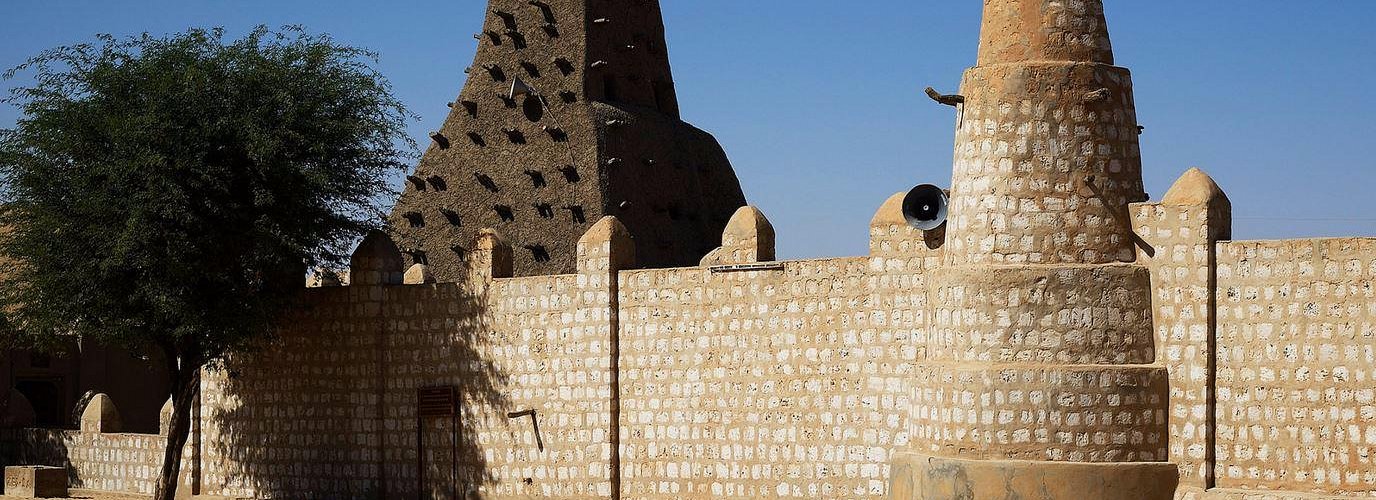
Essential Timbuktu
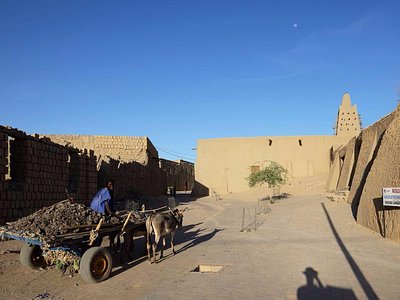
- Hotel Hendrina Khan
- Hotel du desert
- Sahara Passion
- La Palmeraie
A Guide to Timbuktu
The name Timbuktu conjures images of an exotic, far-flung location. This ancient West African city was once a center for scholarship and Islam
Anthropology, Archaeology, Social Studies, World History
Modern day Timbuktu
Photograph by Maremagnum
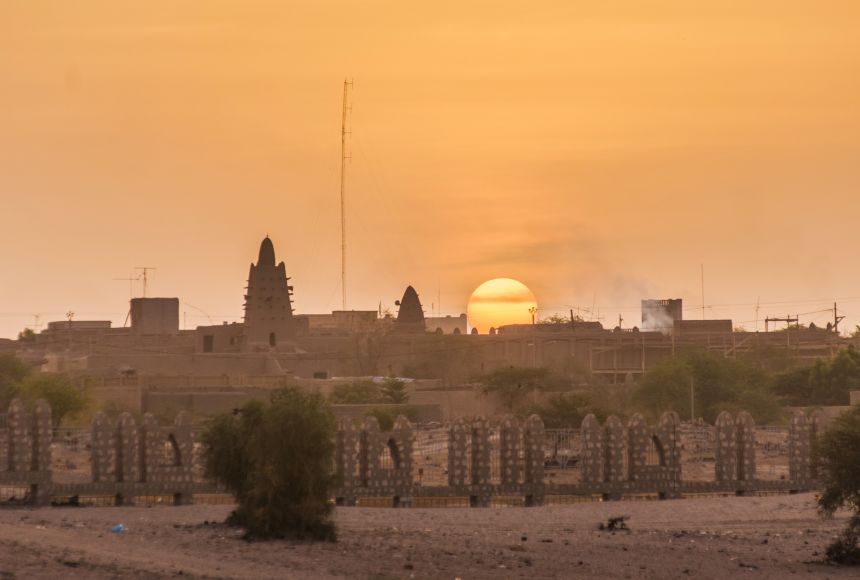
This West African city—long synonymous with the uttermost end of Earth—was added to the World Heritage List in 1988, many centuries after its apex . Timbuktu was a center of Islamic scholarship under several African empires, home to a 25,000-student university and other madrassas that served as wellsprings for the spread of Islam throughout Africa from the 13th to 16th centuries. Sacred Muslim texts, in bound editions, were carried great distances to Timbuktu for the use of eminent scholars from Cairo, Egypt; Baghdad, Iraq; and elsewhere who were in residence in the city. The great teachings of Islam, from astronomy and mathematics to medicine and law, were collected and produced here in several hundred thousand manuscripts. Many of them remain, though in precarious condition, forming a priceless written record of African history. Now a shadow of its former glory, Timbuktu—in modern-day Mali—strikes most travelers as humble and perhaps a bit run-down. But the city’s former status as an Islamic oasis is echoed in its three great mud-and-timber mosques : Djinguereber, Sankore, and Sidi Yahia, which recall Timbuktu's golden age. These 14th- and 15th-century places of worship were also the homes of Islamic scholars known as the Ambassadors of Peace. Most of Timbuktu’s priceless manuscripts are in private hands, where they’ve been hidden for many years, and some have vanished into the black market in a trade that threatens to take with it part of Timbuktu’s soul. There is hope that libraries and cultural centers can be established to preserve the precious collection and become a source of tourist revenue. Some fledgling efforts toward this end are now underway. Religion wasn’t the city’s only industry. Timbuktu sits near the Niger River, where North Africa’s savannas disappear into the sands of the Sahara, and part of its romantic image is that of a camel caravan trade route. This characterization had roots in reality and in fact continues to the present in much reduced form. Salt from the desert had great value and, along with other caravan goods, enriched the city in its heyday. It was these profitable caravans , in fact, that first brought scholars to congregate at the site. In the 16th century, Moroccan invaders began to drive scholars out, and trade routes slowly shifted to the coasts. The city’s importance and prestige waned and scholars drifted elsewhere. French colonization at the close of the 19th century dealt another serious blow to the former glories of Timbuktu. Things in Timbuktu deteriorated to the point that, though recognized as a World Heritage site only a few years before, it was placed on the List of World Heritage in Danger in 1990. But with major improvements to the preservation of the three ancient mosques Timbuktu earned its way off that list in 2005. Timbuktu struggles to draw tourist revenue and develop tourism in a way that preserves the past—new construction near the mosques has prompted the World Heritage Committee to keep the site under close surveillance . Perched as it is on the edge of the Sahara, Timbuktu also faces the threat of encroaching desert sands. In 2012, Timbuktu was once again placed on the List of World Heritage in Danger because of threats related to armed conflict.
Media Credits
The audio, illustrations, photos, and videos are credited beneath the media asset, except for promotional images, which generally link to another page that contains the media credit. The Rights Holder for media is the person or group credited.
Production Managers
Program specialists, last updated.
October 19, 2023
User Permissions
For information on user permissions, please read our Terms of Service. If you have questions about how to cite anything on our website in your project or classroom presentation, please contact your teacher. They will best know the preferred format. When you reach out to them, you will need the page title, URL, and the date you accessed the resource.
If a media asset is downloadable, a download button appears in the corner of the media viewer. If no button appears, you cannot download or save the media.
Text on this page is printable and can be used according to our Terms of Service .
Interactives
Any interactives on this page can only be played while you are visiting our website. You cannot download interactives.
Related Resources
- 1 Understand
- 2.2 By boat
- 2.3 By plane
- 3 Get around
- 9 Stay safe
Timbuktu (also Tombouctou or Timbuctu ) is a Tuareg city on the Niger River in the country of Mali .
Understand [ edit ]

Its long history as a trading outpost that linked black Africa below the Sahara Desert with Berber and Islamic traders throughout north Africa, and thereby indirectly with traders from Europe, has given it a fabled status. Combined with its relative inaccessibility, "Timbuktu" has come to be used as a metaphor for exotic, distant lands. It was once the capital of the Mali Empire, and home to Mansa Musa, the king of the Mali Empire who is regarded as the richest person in history.
Today, Timbuktu is an impoverished town, although its reputation makes it a tourist attraction, and it has an airport. It is one of the eight regions of Mali, home to the local governor. It is the sister city to Djenne (also in Mali).

Timbuktu is a UNESCO World Heritage Site since 1988. In 1990, it was added to the list of world heritage sites in danger, due to the threat of desert sands. A program was set up to preserve the site and in 2005, it was taken off the list of endangered sites only to suffer immeasurable damage at the hands of Islamist militants in 2012 and early 2013, destroying an undetermined amount of the area's cultural heritage. Fourteen of the Sufi mausoleums smashed by extremists were reconstructed by 2015, but much of the city remains damaged.
It was one of the major stops during Henry Louis Gates' PBS special Wonders of the African World . Gates visited with Abdel Kadir Haidara, curator of the Mamma Haidara Library together with Ali Ould Sidi from the Cultural Mission of Mali. It is thanks to Gates that an Andrew Mellon Foundation Grant was obtained to finance the construction of the library's facilities, later inspiring the work of the Timbuktu Libraries Project. There aren't any practicing book artists in Timbuktu although cultural memory of book artisans is still alive, catering to the tourist trade. It is also home to an institute dedicated to preserving historic documents from the region.
The city is in stark contrast to the rest of the country's cities, because it has more of an Arabic flair than of an African. The streets are made of sand (except one), and one has often to go down to get into the houses, because of the sand which has leveled the streets higher than the entrances of the houses.
Get in [ edit ]
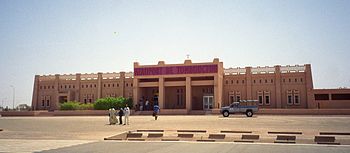
By car [ edit ]
You can come in a 12- to 24-hour trip by car from Mopti or have a hard 4x4 experience from Gao through the desert.
By boat [ edit ]
You can catch one of the many tourist pinnaces from Mopti (or slightly further downstream if the water level is low) they take 3 days to get there and are comfortable (at least mine was). During tourist season there will be plenty of people waiting to go so you can club together to hire one of the pinnaces. At night you will be camping on the shore and there will likely be a cook on the boat, they even have 'toilets' at the back. There are also local boats running up and down stream regularly but they are a little more cramped, but probably a lot cheaper.
By plane [ edit ]
Get around [ edit ].

There are taxis, camels and donkeys, and not much more, but you can easily walk from one end of the city to the other in under an hour. All the mosques are in the old town, which can be walked across in just a few minutes.
See [ edit ]

The three mosques of Djinguereber, Sidi Yahya and Sankore makes up of what have come to be known as the University of Timbuktu . They are closed for visitors during prayers and have time to time been completely off-limits for non-Muslims. All three are within a short walk of each other.
The Western explorers who were the "first" to find Timbuktu all have their houses preserved and commemorative plaques are visible on each of them. Alexander Gordan Laing, first Westerner to make it there and René Caillié, first Westerner to make it there and back among others. Most of these houses are private homes nowadays.
- 16.77255 -3.00619 4 Heinrich Barth's House . German explorer Heinrich Barth made an incredible five-year journey across Sahara and reached Timbuktu in 1853. This tiny museum containing reproductions of Barth's drawings and extracts of his writings.
- 16.772068 -3.005408 5 Timbuktu Ethnological Museum . Has an interesting mix of artifacts and contemporary folk art, albeit the museum feels a bit dusty. Some artifacts have however been stolen in the recent civil war. Also contains the original well of Bouctou around which the city was founded.
- 16.78256 -3.014524 6 Flame of Peace Monument ( Flamme de la Paix ) ( to the north-east of the Petite Marché. ). Commemorates the ceremonial burning of 3000 weapons in March 1996, in honor of the end of the Tuareg rebellion. Many of the old guns are embedded in cement at the base of the monument. The monument is in a rather bad shape, perhaps fitting as the relations between the Tuareg and Mali government have deteriorated.
- Grand Marché , Timbuktu . A two-story market with stalls and shops selling all kinds of things. The roof provides an incredible view across the whole of Timbuktu, to the desert. ( updated Jun 2020 )
You can also hire a Tuareg and camels, however the "sunset tours" are too short to really appreciate the surroundings as the Tuareg camps are only a few hundred metres away from the edge of town. However it is interesting to visit one of the camps (usually just a small family group) and see the sun set over the desert. Even if you don't visit the camps it is worth walking to the dunes on the edge of the town just to see them. A tour over several days will however be fascinating. You may even go to do the 40-day trip to the salt fields. Negotiate with the Tuaregs, and not so-called "guides".
It is not a bad idea to take a child as guide, it prevents you from being hassled as much.
Don't forget to visit the tourist office so you can get your passport stamped with a Timbuktu stamp.
Buy [ edit ]
Take some salt along as well as the Tuareg sabres or knives . You'll be pretty hard pressed to get away from vendors selling all the same "unique" necklaces, earrings, knives and other handicrafts, so make sure to drive them down to a good price. A fair rule is to offer about a third of the first price they quote, then haggle so you pay half their first price. They are used to this and so always start at a high price. However, the things they sell are generally of good quality and great for souvenirs.
There is a shop (called 'objets artes boutique' or something similar) that sells the souvenirs to the sellers you see around town. If you head north from the Hotel Colom the road forks; take the left fork and about 100-200 m down the road, on the left hand side, is this shop. Prices are 6-10 times cheaper here, you cannot bargain but you may get a small (5-10%) discount for buying several items.
Another good idea is to get a postcard and post it, it will have the Timbuktu postal stamp on it. The Post office is down the main street south of the roundabout. The staff in there will give you the right stamps, you can sometimes buy postcards from there or from the many street vendors. Just don't expect to receive the postcard too soon; it can take over a month to get through to many Western countries!
Eat [ edit ]
- Hotel Le Colombe Restaurant , ☏ +223 292 14 35 . CFA 4000 .
There are bars and restaurants around, including one on top of the Grand Marché. There is also a patisserie opposite the post office.
- Cat (see above)
Drink [ edit ]
Avoid drinks prepared from local tap water. Drink only bottled water from shops; if you must drink tap water, boil it first.
A variety of "Western" drinks are available for purchase, sometimes at hotels from the counter. Coca Cola, original, diet or zero will make you lose liquids more quickly than you consume the drink, but the original version of the drink can help to replace sugars. Fanta is also available, but can be harder to find than Coke.
Keep drinking lots of water and carry a bottle with you at all times, even on short trips. Timbuktu can be extremely hot all year round and there are no bodies of water to cool off in.
Sleep [ edit ]
- 16.774289 -3.01005 1 Hotel le Colombe , Bd Askia Mohammed , ☏ +223 292 14 35 . Offers decent air-conditioned rooms. It also has a smaller annex further down the road, the Colomb II, which offers cheaper accommodation.
- 16.775626 -3.014329 2 Hotel Campement Bouctou , ☏ +223 292 10 12 . Cheaper.
- 16.786461 -3.013887 3 Sahara Passion , ☏ +223 292 12 85 .
- Hotel Hendrina Khan , ☏ +223 292 16 81 .
- 16.777366 -3.015618 4 Hotel Azalai , ☏ +223 292 11 63 .
Stay safe [ edit ]
Go next [ edit ].
- UNESCO World Heritage Sites
- UNESCO tag to be fixed
- Has custom banner
- Has map markers
- Airport listing
- Has mapframe
- See listing with no coordinates
- Eat listing with no coordinates
- Sleep listing with no coordinates
- Timbuktu (region)
- All destination articles
- Has Geo parameter
- Outline cities
- Outline articles
- City articles
- Pages with maps
Navigation menu

A dissemination blog about travel and gastronomy

Timbuktu: The Golden Jewel of the Mali Desert
Introduction.
Timbuktu, also known as Tombouctou, is a historic city in the African country of Mali. Located on the edge of the Sahara Desert, this ancient city is famous for its rich history and cultural heritage. Although the arid climate and desert conditions may seem daunting, the beauty and charm of Timbuktu attract travelers from all over the world.
History and Heritage
Timbuktu was an important center of trade and learning during Africa's Golden Age. The city housed the University of Sankore, one of the oldest in the world, where scholars studied mathematics, astronomy, literature, and art. Although much of the ancient city has been eroded by time and weather, remnants of its former glory can still be seen in the remaining monuments and buildings.
Tourist Attractions
One of the main attractions of Timbuktu is the Great Djinguereber Mosque. Built in the 14th century, this impressive mud-brick structure is an outstanding example of Sudanese-Sahelian architecture. Other points of interest include the Sidi Yahya Mosque and the Sankore Mosque, both equally impressive and filled with history.
In addition to the mosques, Timbuktu is also famous for its mausoleums, which are pilgrimage sites for Muslims from around the world. The mausoleums of Alpha Moya and Alfa Sidi are particularly notable.
For those interested in the history and culture of Timbuktu, the Sahara Museum is a must-visit. This museum offers a fascinating insight into desert life, with exhibits displaying historical artifacts, jewelry, musical instruments, and more.
Surroundings of Timbuktu
The surroundings of Timbuktu also offer many opportunities for exploration and adventure. The Boucle du Baoulé National Park, located a short drive from the city, is an ideal place for wildlife spotting, with species such as elephants, hippos, and a variety of exotic birds.
For a truly unique experience, visitors can opt for a camel ride through the Sahara Desert. These trips offer an unforgettable view of the vastness and beauty of the desert, and are a popular way to experience traditional nomadic life.
Tips for Travelers
Timbuktu can be a challenging destination for some travelers due to its remote location and harsh desert conditions. However, with careful planning and an open mind, visiting this golden jewel of the desert can be an incredibly rewarding and enriching experience.
Gastronomic Products of Timbuktu
Jollof rice.
Jollof Rice is a popular dish in many West African countries, including Mali. It is a rice dish that is cooked in a tomato broth and seasoned with local spices. It is often served with meat or fish and vegetables. The Jollof Rice of Timbuktu is known for its unique taste and rich blend of flavors.
Maafe is a stew made from meat and vegetables that is cooked in a peanut sauce. It is a traditional dish of Mali and is very popular in Timbuktu. Maafe can be made with a variety of meats, including lamb, chicken, and fish, and is often served with rice or millet bread.
Mint tea is a traditional drink in Timbuktu and is often served after meals. It is prepared with fresh mint leaves and sweetened with sugar. Mint tea is known for its digestive properties and is an important part of hospitality in Timbuktu.
Highlighted Gastronomic Places of Timbuktu
Timbuktu, a city full of history and culture, also offers a variety of places to enjoy its rich cuisine. Below, we present some of the most outstanding:
Le Kasbah Restaurant
Located in the heart of Timbuktu, Le Kasbah Restaurant is known for its excellent Malian cuisine. Here you can taste traditional dishes such as couscous, tagine, and the famous grilled lamb. In addition, the cozy atmosphere and friendly service make this place a perfect option to enjoy an unforgettable meal.
Tuareg Tavern
If you are looking for a charming place with good prices, the Tuareg Tavern is an excellent option. This cozy establishment offers a wide variety of tapas and typical dishes from Mali, such as mafé, a meat stew with peanut sauce, and yassa, chicken marinated in lemon and onion. In addition, its extensive tea menu will allow you to pair your favorite dishes with the best selection of African infusions.
Touba Cafe is a must-visit for coffee lovers. This small and cozy cafe is famous for its spiced coffee, a unique blend of coffee and spices that is a specialty of the region. In addition to its excellent coffee, Touba Cafe also offers a variety of pastries and snacks, making it the perfect place for breakfast or a snack.
Sporting Activities in Timbuktu, Mali
Camel racing.
Timbuktu, being a desert city, offers the thrilling opportunity to watch camel races. These events are a big part of the local culture and are a unique experience for tourists.
Desert Trekking
The desert surrounding Timbuktu is an awe-inspiring place for trekking. Tourists can hire local guides to take them through the sand dunes and experience the austere beauty of the landscape.

Boat Ride on the Niger River
The Niger River, which flows near Timbuktu, offers the opportunity for boat rides. Tourists can enjoy the tranquility of the river and observe the local wildlife.
Soccer is a very popular sport in Mali and tourists can join the locals for a friendly match. It's an excellent way to interact with the local people and enjoy the sporting spirit.

Places near Timbuktu
If you're in Timbuktu and want to explore a bit more, here are some nearby cities and towns that offer unique tourist and gastronomic experiences:

Top Things to Do in Timbuktu, Mali - Timbuktu Must-See Attractions
Things to do in timbuktu.
- 4.0 of 5 bubbles & up
- Good for a Rainy Day
- Good for Kids
- Good for Big Groups
- Adventurous
- Budget-friendly
- Hidden Gems
- Good for Couples
- Honeymoon spot
- Good for Adrenaline Seekers
- Things to do ranked using Tripadvisor data including reviews, ratings, photos, and popularity.
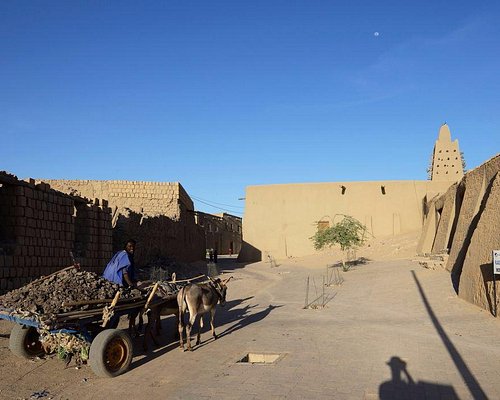
1. Djinguereber Mosque

2. Mosque of Sankore


4. No Restaurant
What travellers are saying.

- Djinguereber Mosque
- Mosque of Sankore
Take advantage of the search to browse through the World Heritage Centre information.
Share on social media
Unesco social media.
- Description
Home of the prestigious Koranic Sankore University and other madrasas , Timbuktu was an intellectual and spiritual capital and a centre for the propagation of Islam throughout Africa in the 15th and 16th centuries. Its three great mosques, Djingareyber, Sankore and Sidi Yahia, recall Timbuktu's golden age. Although continuously restored, these monuments are today under threat from desertification.
Description is available under license CC-BY-SA IGO 3.0
Dotée de la prestigieuse université coranique de Sankoré et d'autres medersa, Tombouctou était aux XV e et XVI e siècles une capitale intellectuelle et spirituelle et un centre de propagation de l'islam en Afrique. Ses trois grandes mosquées (Djingareyber, Sankoré et Sidi Yahia) témoignent de son âge d'or. Bien que restaurés au XVI e siècle, ces monuments sont aujourd'hui menacés par l'avancée du sable.
كانت تمبوكتو التي تتميّز بالمسجد الجامعي المدهش الواقع في سانكوري وبمدارسَ أخرى، في القرنَيْن الخامس عشر والسادس عشر، عاصمةً فكريّةً وروحيّةً ومركزًا لنشر الاسلام في أفريقيا. فمساجدها الثلاثة (جينقري بير وسانكوري وسيدي يحي) تشهد على عصرها الذهبي. وبالرغم من ترميمها في القرن السادس عشر، تُعتبَر هذه النصب الأثريّة مُهدّدةً اليوم بفعل تقدّم الرمال.
source: UNESCO/CPE Description is available under license CC-BY-SA IGO 3.0
这里是声名显赫的科兰尼克·桑科雷大学的所在地。廷巴克图在公元15世纪至16世纪成为了宗教文化中心,同时也是伊斯兰文化向非洲传播的中心。津加里贝尔、桑科尔和西迪·牙希亚这三座雄伟的清真寺反映了廷巴克图的黄金年代。尽管这些建筑不断地被修复,但是今天它们仍然受到风沙侵蚀的威胁。
Outstanding Universal Value
Located at the gateway to the Sahara desert, within the confines of the fertile zone of the Sudan and in an exceptionally propitious site near to the river, Timbuktu is one of the cities of Africa whose name is the most heavily charged with history.
Founded in the 5th century, the economic and cultural apogee of Timbuktu came about during the15th and 16th centuries. It was an important centre for the diffusion of Islamic culture with the University of Sankore, with 180 Koranic schools and 25,000 students. It was also a crossroads and an important market place where the trading of manuscripts was negotiated, and salt from Teghaza in the north, gold was sold, and cattle and grain from the south.
The Djingareyber Mosque, the initial construction of which dates back to Sultan Kankan Moussa, returning from a pilgrimage to Mecca, was rebuilt and enlarged between 1570 and 1583 by the Imam Al Aqib, the Qadi of Timbuktu, who added all the southern part and the wall surrounding the cemetery located to the west. The central minaret dominates the city and is one of the most visible landmarks of the urban landscape of Timbuktu.
Built in the 14th century, the Sankore Mosque was, like the Djingareyber Mosque, restored by the Imam Al Aqib between 1578 and 1582. He had the sanctuary demolished and rebuilt according to the dimensions of the Kaaba of the Mecca.
The Sidi Yahia Mosque, to the south of the Sankore Mosque, was built around 1400 by the marabout Sheik El Moktar Hamalla in anticipation of a holy man who appeared forty years later in the person of Cherif Sidi Yahia, who was then chosen as Imam. The mosque was restored in 1577-1578 by the Imam Al Aqib.
The three big Mosques of Djingareyber, Sankore and Sidi Yahia, sixteen mausoleums and holy public places, still bear witness to this prestigious past. The mosques are exceptional examples of earthen architecture and of traditional maintenance techniques, which continue to the present time.
Criterion (ii): The mosques and holy places of Timbuktu have played an essential role in the spread of Islam in Africa at an early period.
Criterion (iv): The three great mosques of Timbuktu, restored by the Qadi Al Aqib in the 16th century, bear witness to the golden age of the intellectual and spiritual capital at the end of the Askia dynasty.
Criterion (v): The three mosques and mausoleums are outstanding witnesses to the urban establishment of Timbuktu, its important role of commercial, spiritual and cultural centre on the southern trans-Saharan trading route, and its traditional characteristic construction techniques. Their environment has now become very vulnerable under the impact of irreversible change.
The three mosques and the sixteen mausoleums comprising the property are a cliché of the former great city of Timbuktu that, in the 16th century, numbered 100,000 inhabitants. The vestiges of urban fabric are essential for their context. However, as indicated at the time of inscription of the property, rampant urbanization which is rife in Timbuktu, as in Djenne, is particularly threatening to the architecture, and the large public squares and markets. Contemporary structures have made irretrievable breaches in the original parcelling and obviously exceed the scale of the traditional buildings. This process is ongoing and most recently a new very large institute was built on one of the public squares, compromising the integrity of the Sankore Mosque. Urban development pressures, associated with the lack of maintenance and flooding, resulting from the heavy rains, threaten the coherence and integrity of the urban fabric and its relation to the property.
The three mosques are stable but the mausoleums require maintenance, as they are fragile and vulnerable in the face of irreversible changes in the climate and urban fabric.
The three mosques retain their value in architectural terms, traditional construction techniques associated to present-day maintenance, and their use. However, the Sankore Mosque has lost a part of the public square that was associated with it following the construction of the new Ahmed Baba Centre. Following this construction, the status of the mosque in the urban context and part of its signification have been compromised and require review and reconsideration.
Overall, because of the threat from the fundamental changes to the traditional architecture and the vestiges of the old city, the mosques and mausoleums risk losing their capacity to dominate their environment and to stand as witnesses to the once prestigious past of Timbuktu.
The site of Timbuktu has three fundamental management tools: a Revitalization and Safeguarding Plan of the Old Town (2005), and a Strategic Sanitary Plan (2005), that are being implemented despite certain difficulties; and a Conservation and Management Plan (2006-2010) is being implemented and which shall be reassessed shortly.
The management system of the property is globally appropriate as its legal protection is jointly assured by the community of Timbuktu through management committees of the mosques, the cultural Mission of Timbuktu and the Management and Conservation Committee of the Old Town of Timbuktu. This mechanism is strengthened by two practical functioning modalities, initiated in consultation with the World Heritage Centre: the Town Planning Regulation and the Conservation Manual. The specific long-term objectives are the extension of the buffer zone by approximately 500 m to assure the protection of the inscribed property ; the development of the historic square of Sankore to integrate corrective measures proposed by the Committee at its 33rd session and by the reactive monitoring mission of March 2010 ; the extension of the inscribed property to include the entire Timbuktu Medina ; the development of an integrated conservation and sustainable and harmonious management project for the site, in the wider framework of development of the urban commune and in close cooperation with the elected members of the Territorial Communities of Timbuktu and the development partners ; the active conservation of the mausoleums.
- Google Arts & Culture: Story - Rebuilding Timbuktu
- Google Arts & Culture: Story - Rebuilding and restoring Timbuktu

List of World Heritage in Danger
Inscription Year on the List of World Heritage in Danger
State of Conservation (SOC)

8 Things To Do in Mali [Best Places to Visit in Mali – West Africa]
You’ve probably heard the name Timbuktu at least once in your life. And if you’re like me, there’s a big chance that you did so through a song. But where is Timbuktu, anyway?
This is where Mali comes in, a Saharan country in West Africa where Timbuktu is. It’s a land-locked state with Algeria, Mauritiana, Niger, Burkina Faso, Ivory Coast, Guinea and Senegal around it. Mali was formerly part of the three West African empires that controlled this region of the continent. It was then taken over by the French around the 19th century and gained its independence in the 1960s.
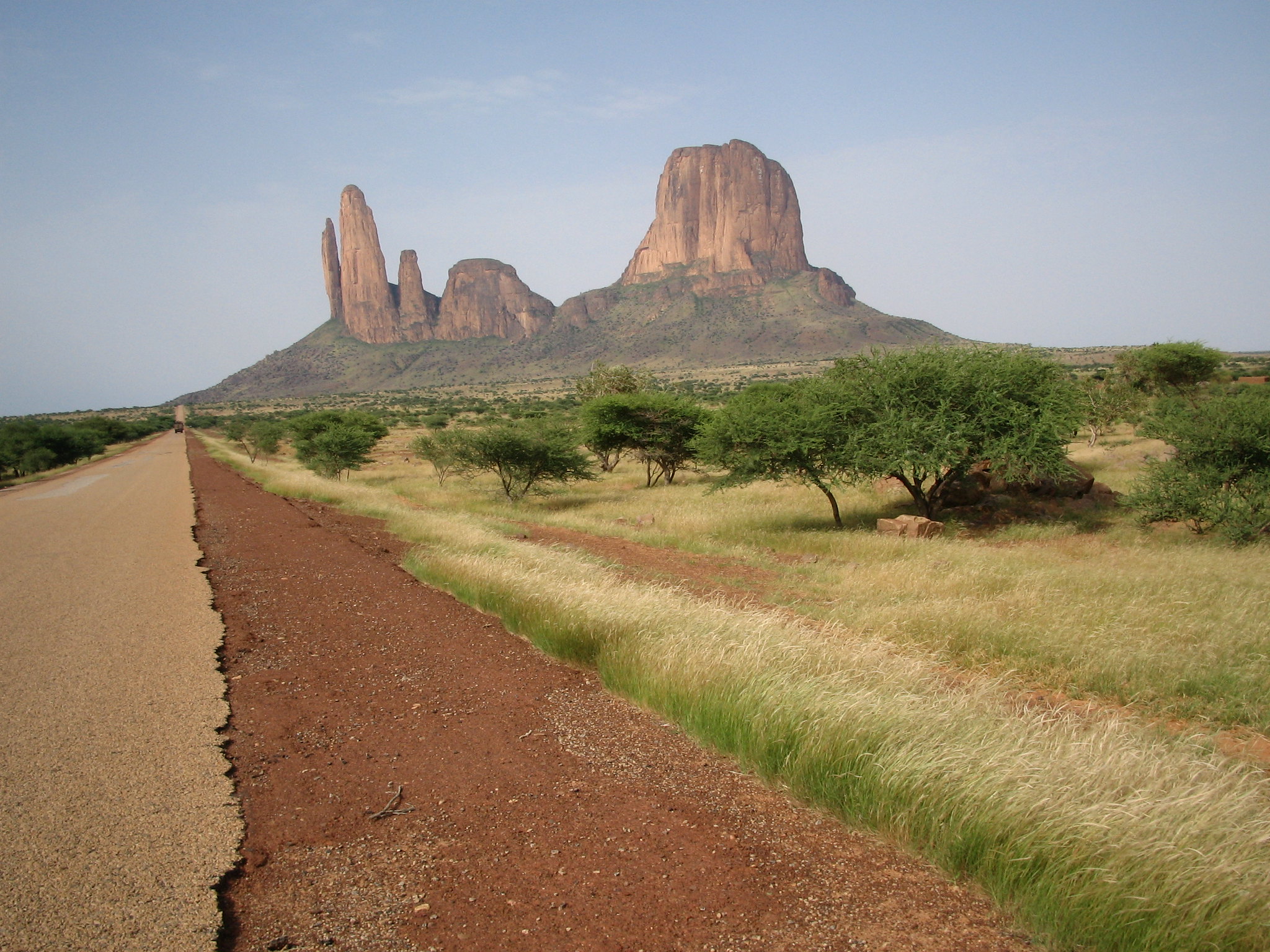
Unfortunately, traveling to present-day Mali isn’t so ideal lately as violence is prevalent in the country with even civilians getting seriously injured over terrorist attacks. There are still a few tour operators in the country, however, who still assist visitors who want to explore the country through the scope might be a bit restricted.
- Crossing The Border To Somaliland: The Danger, The Process and Useful Tips
- How to Teach English in South Africa – English Teacher Jobs in Africa
- Your Dream Africa Trip – Encounter Gorilla and Wildlife Safari in East Africa
- Ultimate List of Best Cheap Hotels in South Africa
- EAST AFRICA TOURIST Visa for Kenya, Uganda & Rwanda – Guide for Philippines Passport Holder
Below, I’ll be listing some of the best things you can only experience in Mali which, hopefully, we can all get to experience once the situation has gotten better.
Table of Contents
Key Cities in Mali
Bamako – This is the country’s capital and was considered as one of the fastest-growing cities in the world. This is where most of the administrative activities in Mali happen and are also where some of the most important buildings in today’s Mali are situated.
This city can trace back its origins to the Palaeolithic era as evidence of settlements as early as this time can be found in some areas of Bamako. This is highly likely due to the proximity of the city to the Niger River Valley where they were able to grow an abundant food supply and trade as well.
Mopti – Another popular city in Mali is Mopti, which is said to have the highest concentration of the country’s natural resources. It is also known to be the country’s most valuable port as well as a huge commercial center.
Tourists are attracted to Mopti for its attractions like the Grand Mosque and the Pays Dogon.
Timbuktu – This popular ancient city is home to some of the country’s most valuable possessions as it was an Islamic scholarship center for many years. Timbuktu takes pride in its manuscripts were teachings of Islam, mathematics, law, science and more where listed.
Aside from its historical significance, Timbuktu also served as a trade route for invaders before the country was colonized by France.
At present, Timbuktu is among UNESCO’s World Heritage Sites.
Djenné – Another important city in the history of Mali is Djenné, a city in the Inland Niger Delta region. Old Djenné is one of the oldest towns in this part of Africa and has been inhabited since 250 B.C
Djenné also served as an important market center and link to the trans-Saharan gold trade back in the days.
Aside from its economic purposes, Djenné was also an integral part of the propagation of Islam in the country. Until now, you’ll still see some of the historic Islamic structures in the city.
What To Do in Mali
1. witness the amazing mali architecture for yourself.
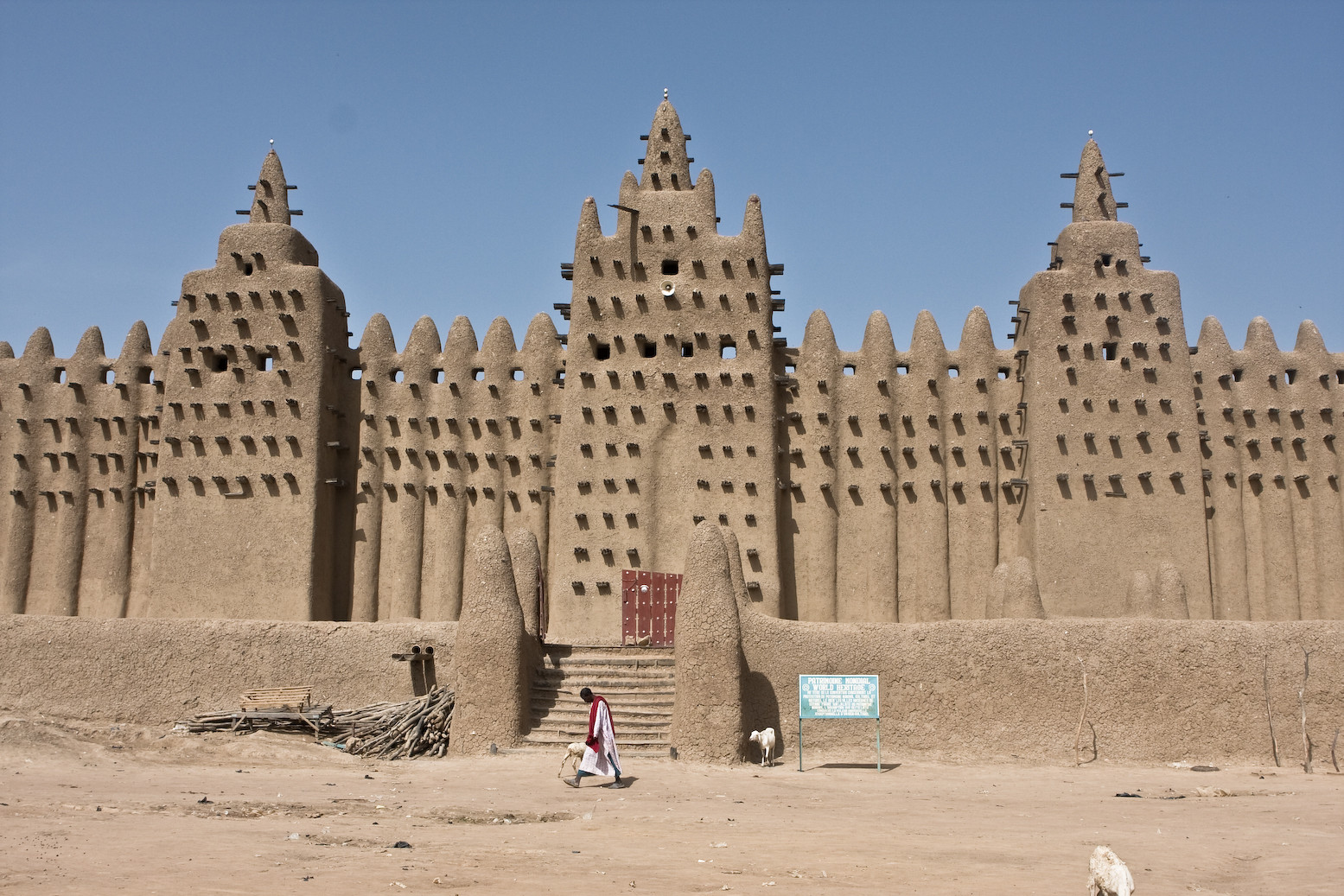
If you do a quick online search about Mali, you’ll notice how its buildings look nothing like what you’ll typically see anywhere! Mali buildings are often made following the traditional adobe architecture, giving them their distinct orange hues. Some of the most notable structures are the Grande Mosquée in Djenné which is known to be the world’s largest mud-brick building and the mosque of Musa I in the town of Gao.
2. Get to know more about life along the Niger River
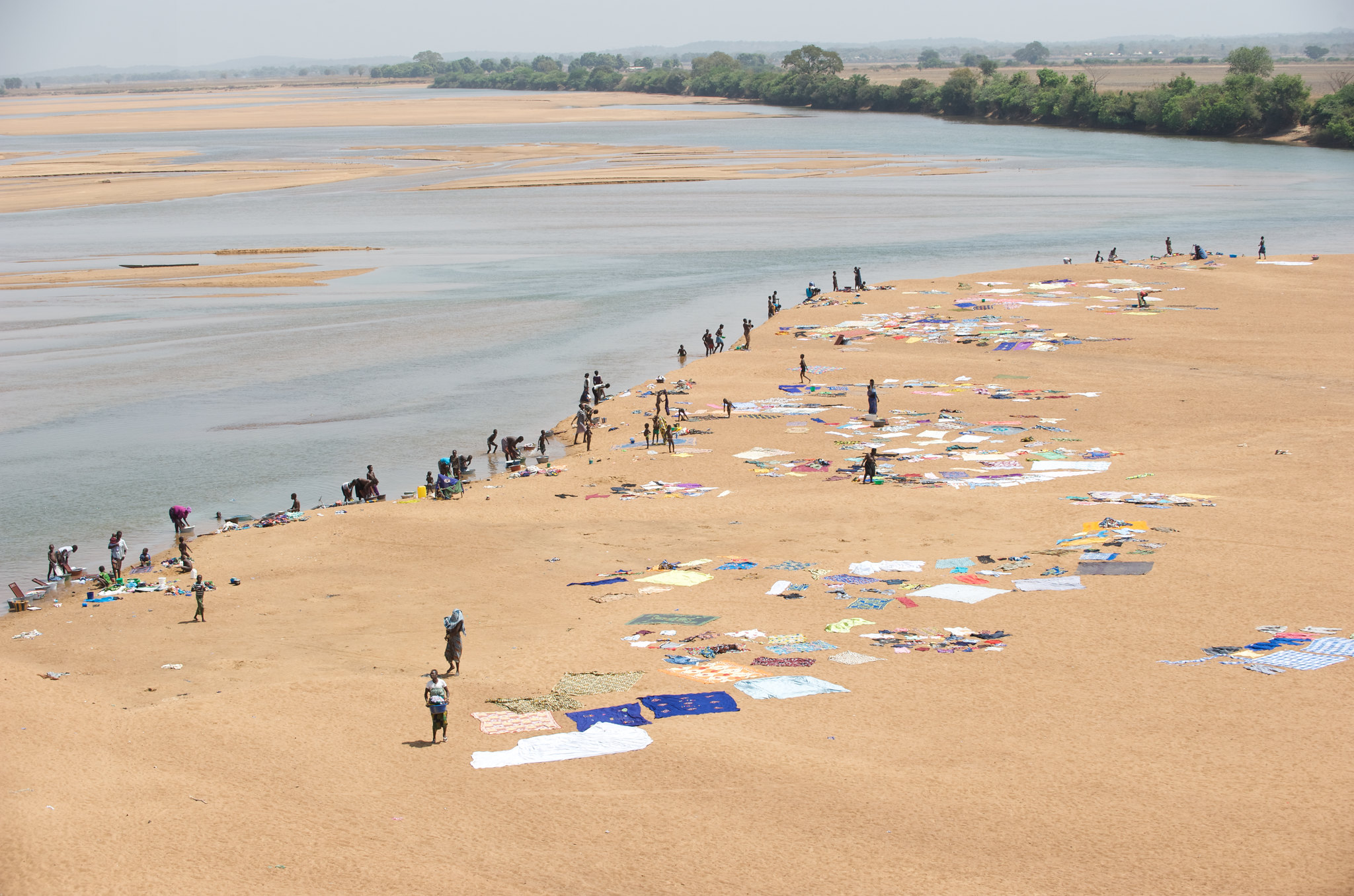
Mali is home to various ethnic groups, some of which chose the Niger river as their settlement as it is a good source of livelihood for them.
Mopti and Djenné are both settlements around the Niger River where people of different ethnic groups still live. Go ahead and visit any of these two to get an authentic experience interacting with Mali locals.
There’s even a music festival being held around the river where Mali’s best performers gather now and then.
3. Visit Timbuktu
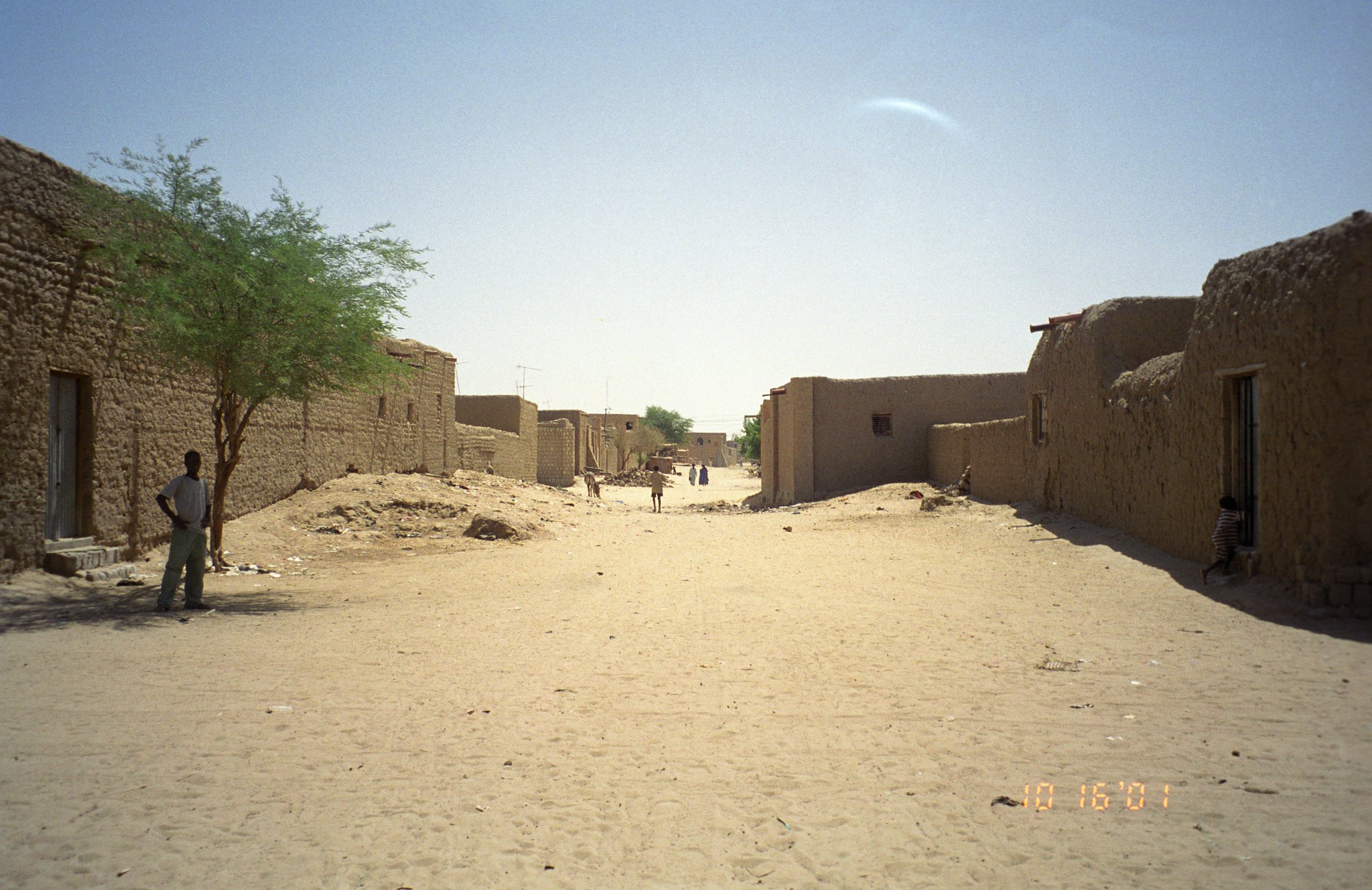
Probably the most famous destination in Mali, this town was once thought of as a city made of gold. It wasn’t, of course, but gold was often traded in its streets together with salt, spices, and dyes. Get to know this mysterious destination more by visiting its important mosques, structures made of mud, and even spending time with the Tuareg people (people who have been here since old times) by spending the night at their camp.
4. Explore the desert
As part of the Saharan region, Mali has its fair share of warm-colored desert land which you might be curious to explore. If you want, you can go ahead and visit the Pink Dune which is the highest spot along the Niger River. This looks especially beautiful during sunset as it turns into a beautiful shade of pink. To get there, you might need to hire a boat that will take you across the Niger river before you can go hiking up the mountain of sand.
5. Get in touch with nature
View this post on Instagram A post shared by Beautifulafrica (@beautiful.africa) on Oct 11, 2016 at 12:49am PDT
Of course, no African trip will be complete if you don’t get to experience their wildlife for yourself. Boucle du Baoulé National Park is a western Malian area where traces of prehistoric rock art and tombs can be found. Along with these, you’ll find local animals like giraffe, elephant, buffalo, hippo and a few more in their typical surroundings here.
6. Go shopping for local products
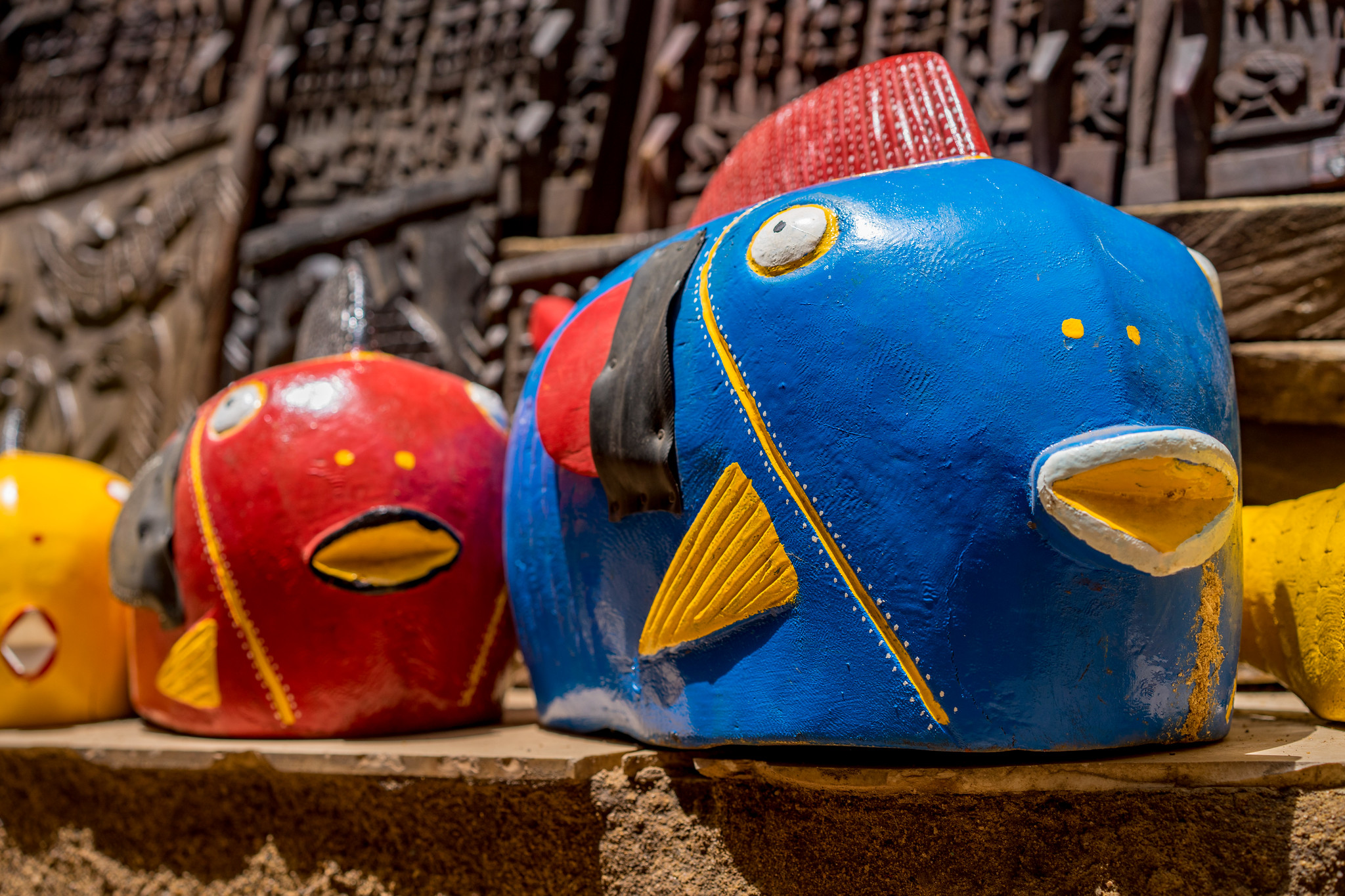
Ségou, a city in south-central Mali, is located on the banks of the River Niger and is home to some very creative people. Not only do they make beautiful pottery, but they also produce the bogolan cloth which is dyed with fermented mud. Go ahead and visit so you can get to know more about Mali’s local art scene.
7. Enjoy the capital!
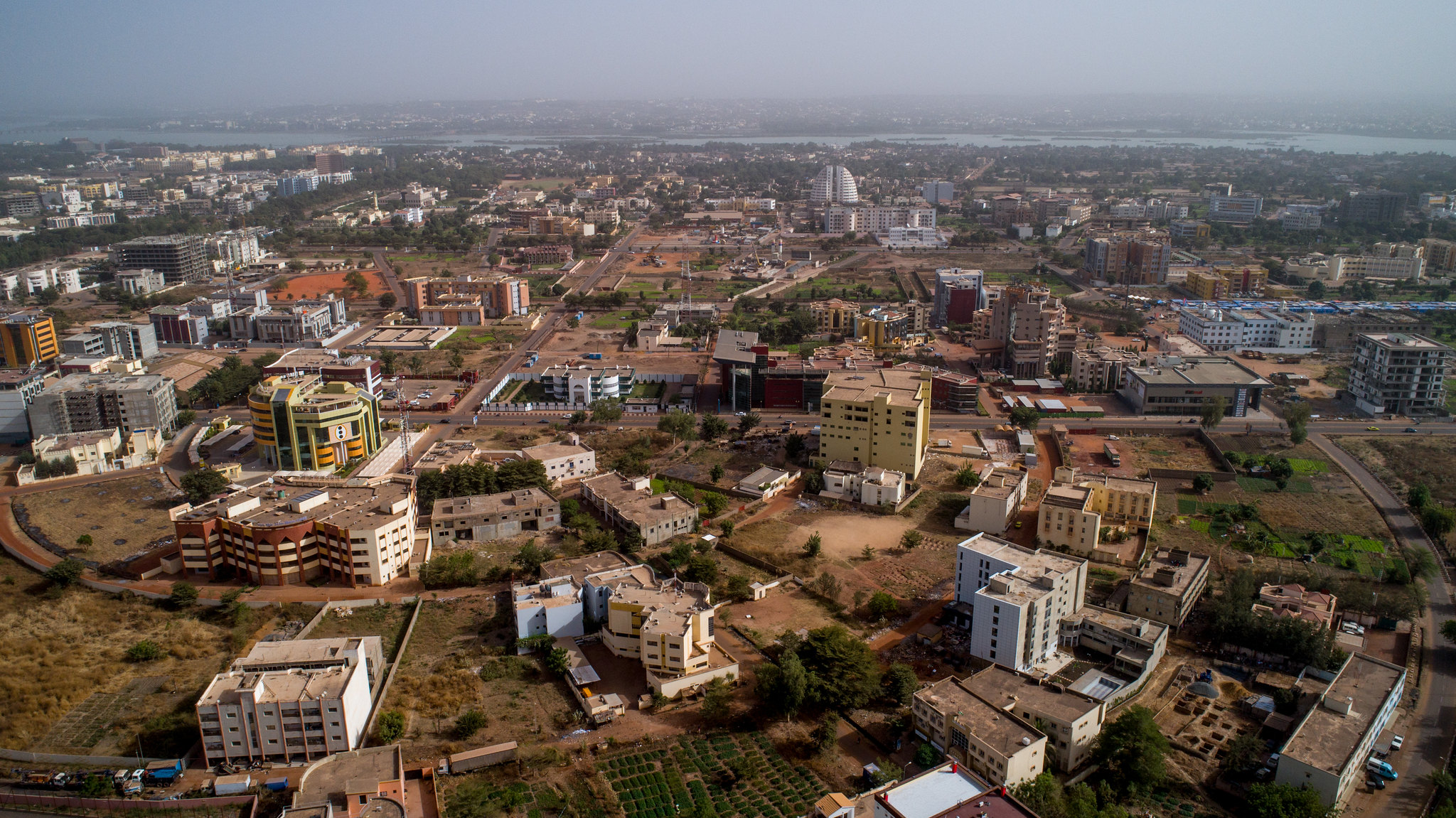
As Bamako is the country’s modern city, expect to find several interesting places and things that you can visit or do while you’re there. There will be markets, botanical gardens, museums, and even craft centers. If you want to see Malian artifacts, Musée National is a good destination for you. This is where you’ll find interesting ethnographic items from Mali’s ethnic groups.
Feeling a bit adventurous? Fetish Stalls might not be for the faint of heart, but if you can endure seeing skulls, skin, bones, dried animals or any of that sort, then it’s an interesting venue to explore.
8. Join the Festival of the Desert
View this post on Instagram A post shared by Alice Mutasa (@alami1906) on Jul 7, 2019 at 5:32am PDT
It’s been a while since it was last celebrated in Timbuktu. But if it ever comes back to Mali again and the situations are more stable than they are at present, this is something you definitely shouldn’t miss!
The Festival Au Desert was inspired by the Touaregs’ tradition of coming together for an annual meeting called Takoubelt which allows them to reconnect with one another, reconcile, and exchange thoughts. Here, you’ll find amazing Malian artists coming together to celebrate art, music, dance, literature and more.
It’s also a way to celebrate the “La Famme de la Paix” which is the ceremony thousands of firearms are burned and transformed into a monument. It symbolized the peaceful ending to a rebellion that lasted for years in Timbuktu.
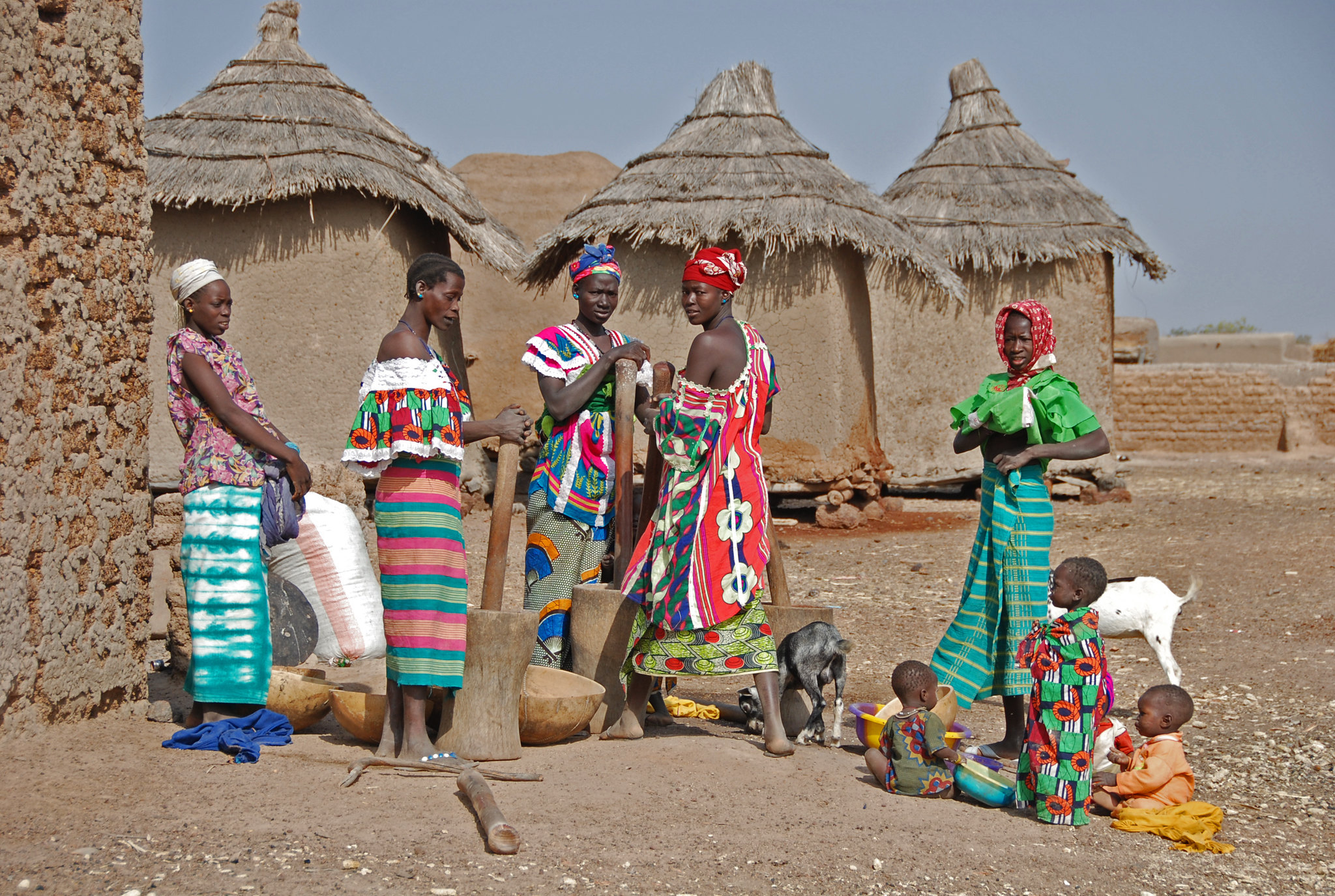
Frequently Asked Questions About Traveling to Mali
1. How do I get to Mali?
There are a few airlines operating flights to Mali regularly. You can get on a connecting flight to Bamako through Paris or Casablanca.
2. Do I need a visa to go to Mali?
If you are a citizen of any of these countries, you can go to Mali without a visa:

If you have a diplomatic and service passport from any of these countries, you can visit Mali for 90 days without a visa:
Cuba Russia Rwanda China (public affairs passport) South Africa (diplomatic, service and official passports)
Citizens of these countries can go to Mali with a visa on arrival:
Kenya Rwanda
3. How long is the tourist visa application process?
It takes around 10 working days for a Malian Embassy to process your tourist visa.
4. How long is a Malian tourist visa valid for?
You can apply for a 1-month single-entry visa or a 3-month and 6-month multiple visas.
5. Is Mali safe for tourists?
Unfortunately, the situation in some of Mali’s regions isn’t so safe for visitors at the moment due to terrorist activities.
If you would like to travel to Mali, it’s best to check your country’s travel advisory first and plan to make sure you don’t get to places that are considered off-limits.
Also, if you want to visit, it’s always advisable to get a local tour operator to make sure you’re only going around places you are allowed to.
6. How do I go around Mali?
Public transportation like taxis and trains are accessible when in Mali.
7. Will I need a translator in Mali?
You probably will, unless you speak a little bit of French which is one of their official languages.
8. When is the best time to visit Mali?
The best time to visit is during the drier seasons of the year which go from October to January. You’ll also want to avoid the harmattan wind which comes from the Sahara from January to May.

Are you on Pinterest? Pin these!
![mali timbuktu tourism 8 Things To Do in Mali [Best Places to Visit in Mali West Africa]](https://twomonkeystravelgroup.com/wp-content/uploads/2021/06/8-Things-To-Do-in-Mali-Best-Places-to-Visit-in-Mali-West-Africa1.png)
Leave a Reply Cancel reply
Your email address will not be published. Required fields are marked *
This site uses Akismet to reduce spam. Learn how your comment data is processed .
COPYRIGHT DISCLAIMER: Many of the articles on Two Monkeys Travel Group are guest posts by a number of Approved Contributors and are hosted by Two Monkeys Travel Group. Approved Contributors control their own work and post freely to our site. This includes all text and images that they use within their own work. All contributors are instructed to follow internationally recognised copyright and intellectual property guidelines. Two Monkeys Travel Group takes its own responsibilities very seriously, so if you feel that any part of this work is abusive in any way, please send us an email so that we can investigate - [email protected]
DISCLOSURE: Please note that some of the links above are affiliate links. So when you make a purchase we sometimes make a small commission, at no extra cost to you. The cost to you remains the same, sometimes even cheaper if we have negotiated a special deal for our readers.We use all of the companies we have listed here and that’s why they are in this list, but of course we need to keep Two Monkeys Travel Group running as well as it can, which is exactly what you’re helping with if you do decide to buy or book something through an affiliate link! If you have any more questions about the companies we use or any other companies you’re looking at, just email us and we’ll be happy to help. Please see our full disclaimer page for more information.
Written by Two Monkeys Travel - Contributor
Two Monkeys Travel Group – Community Travel Blog is a travel blog and website. We quickly grew into a valuable source of inspiring travel stories, advice, itineraries and travel guides, with the aim of demonstrating how to live a sustainable life of travel, whilst living your own definition of success. If you'd like to contribute and write a guest post, contact us at [email protected]
48 Hours in Tokyo – Exploring Japan’s Vibrant Capital
How to find the best hotels in new york, top california destinations for families to enjoy, scuba diving and snorkeling in the philippines, what are the benefits of booking flight tickets in advance, related posts, mahé travel guide: getting spoiled in the seychelles, 8 things to do in sierra leone [best places to visit in sierra leone], how to get an algeria tourist visa in london for british citizens, how to apply for tanzania evisa for filipinos and other nationalities, previous post, car insurance & green card – local insurance company in montenegro, 10 best things to do in koh pha ngan, thailand [with suggested tours], subscribe to our newsletter.
Receive tips on how you can live a sustainable long-term travel lifestyle!
- First Name *
- Comments This field is for validation purposes and should be left unchanged.

©David MG/500px
Like an exquisite sandcastle formed in a harsh desert landscape, Mali is blessed by an extraordinary amount of beauty, wonders, talents and knowledge.
Your next trip starts here
Go from dreaming to planning with trip planning options made to help you craft your ideal itinerary.
Attractions
Must-see attractions.

Grande Mosquée
Djenné's elegant Grande Mosque was constructed in 1907, though it's based on the design of an older Grande Mosquée that once stood on the site. Famous…
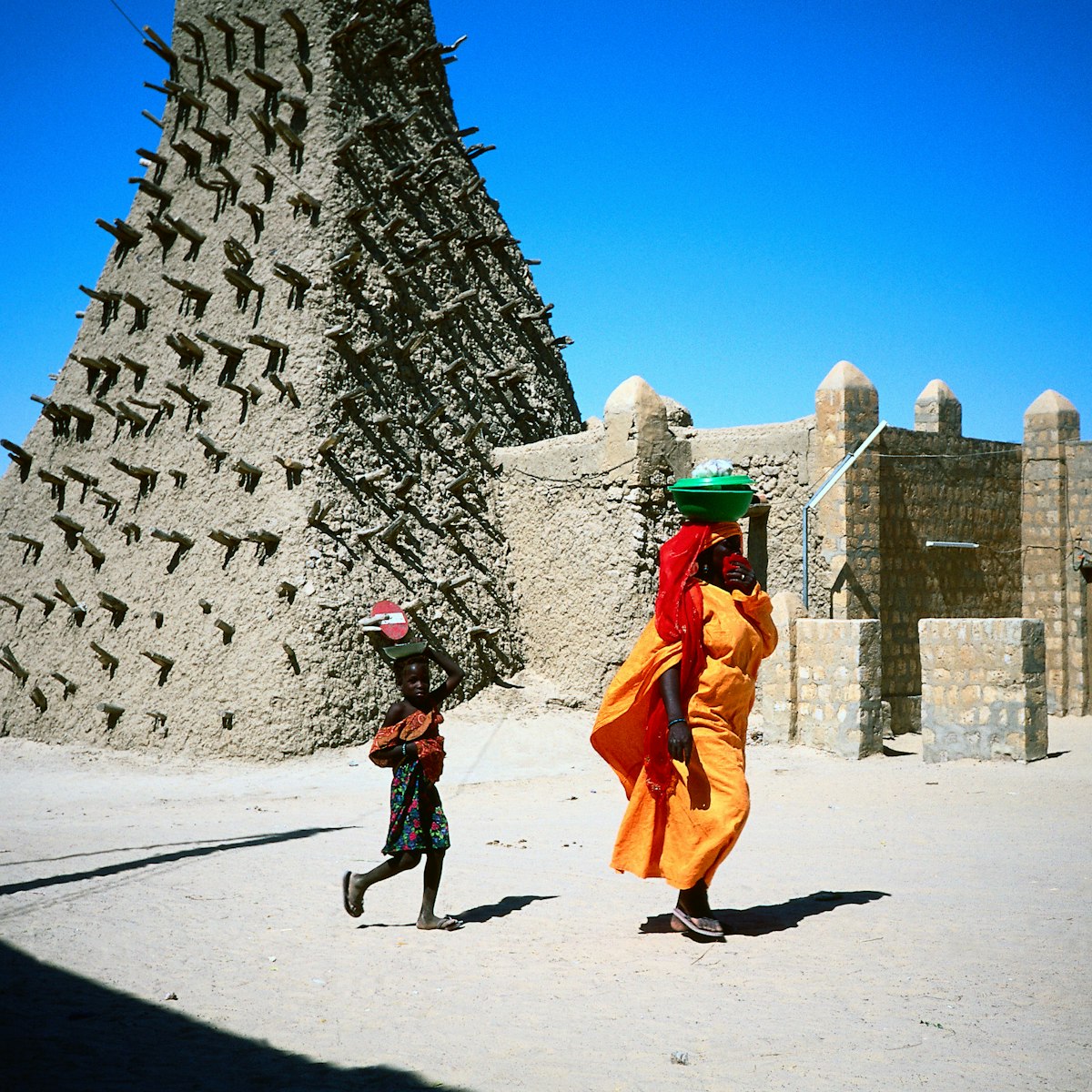
Sankoré Mosque
Timbuktu's three great mosques - all inaccessible to non-Muslims - are nothing much to look at, but serve as reminders of its great past. The youngest of…
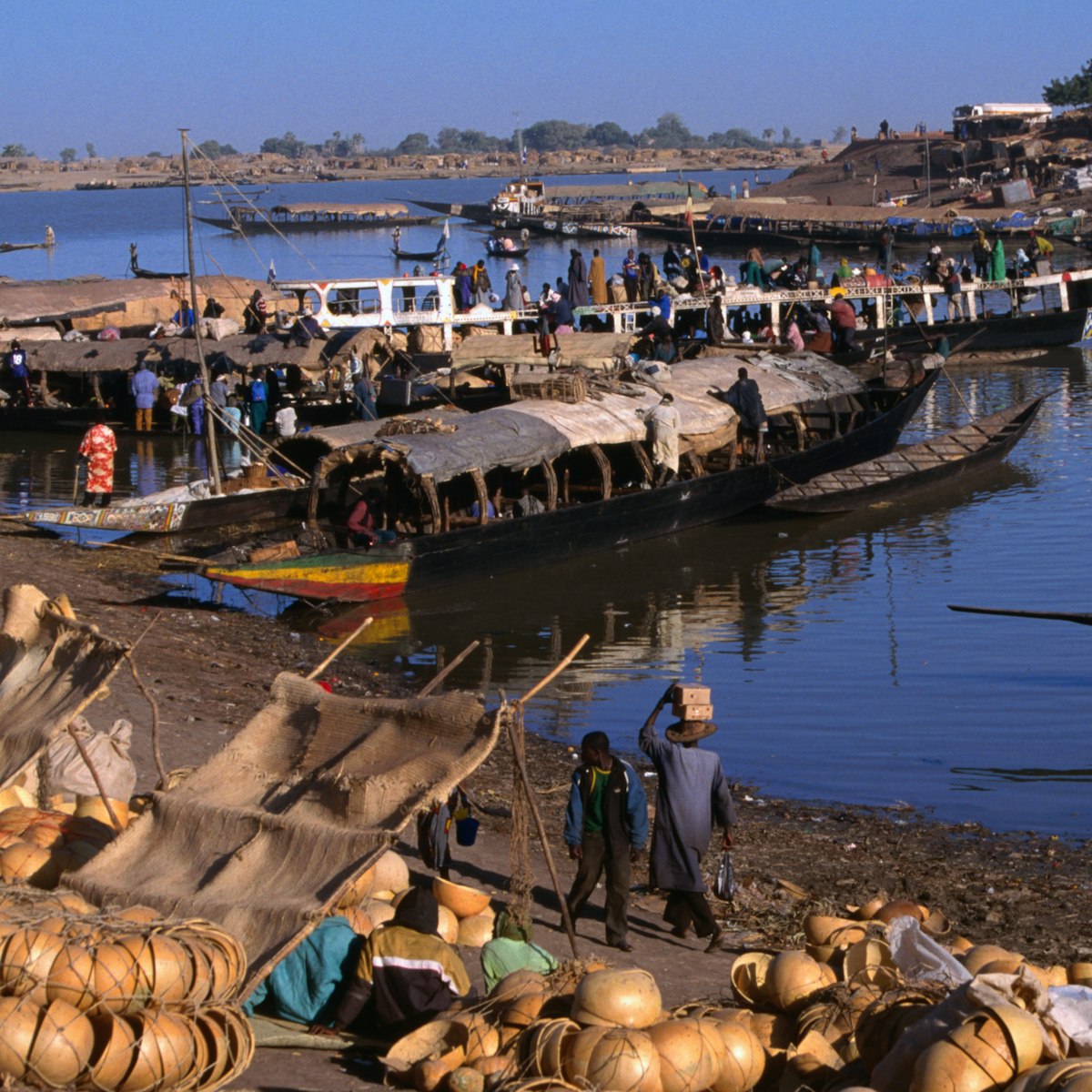
Mopti's port is a lively place, where boats from up and down the river unload their cargoes. You'll see slabs of salt from Timbuktu, dried fish, firewood,…

Dyingerey Ber Mosque
Timbuktu has three of the oldest mosques in West Africa. While not as visually stunning as some in Mali, they're still extremely impressive and represent…

Grand Marché
Every Monday, the wide open area in front of the mosque is transformed into the clamorous Monday Market, which has barely changed since the days when…

From the pleasant Fula village of Massina, you can start a trip along the Niger by public pinasse (large canoe). A good first stop is Diafarabé, where…

Centre de Recherches Historiques Ahmed Baba
An amazing collection of ancient manuscripts and books are kept at the Centre de Recherches Historiques Ahmed Baba. Home to (at last count) 23,000 Islamic…

La Dune Rose
Gao's premier tourist attraction is a sunset trip to La Dune Rose, known locally as Koïma, a wonderful sand dune on the right bank of the Niger, visible…
Latest stories from Mali
Filter by interest:
- All Interests
- Adventure Travel
- Art & Culture
- Beaches, Coasts & Islands
- Food & Drink
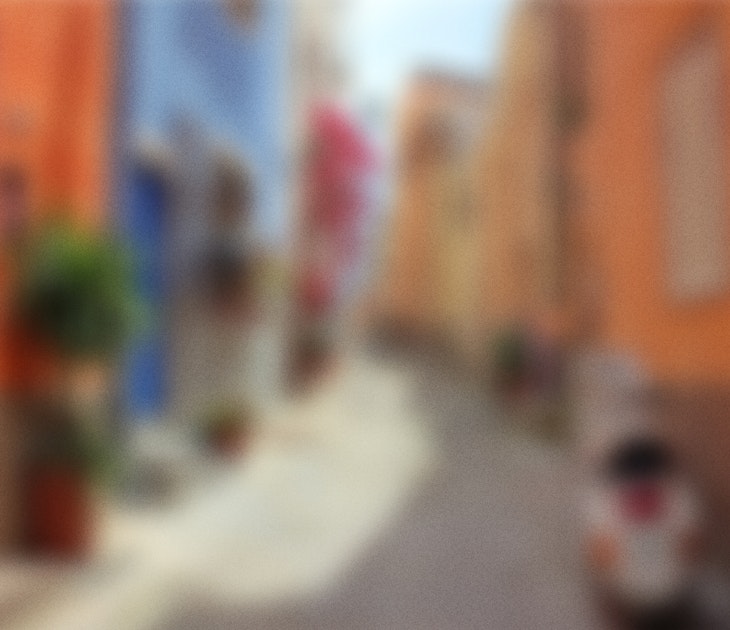
Feb 16, 2011 • 2 min read
Mali’s Dogon Country can feel like a deliciously African evocation of the remote. Dogon villages have no electricity. Nor are they linked by a single…

Jan 5, 2011 • 2 min read
in partnership with getyourguide
Book popular activities in Mali
Purchase our award-winning guidebooks.
Get to the heart of Mali with one of our in-depth, award-winning guidebooks, covering maps, itineraries, and expert guidance.
Mali and beyond
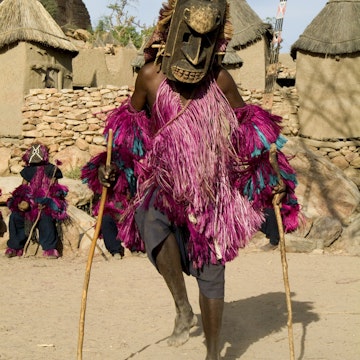
Top Things to Do in Timbuktu, Mali
Places to visit in timbuktu.
- 4.0 of 5 bubbles & up
- Good for a Rainy Day
- Good for Kids
- Good for Big Groups
- Adventurous
- Budget-friendly
- Hidden Gems
- Good for Couples
- Honeymoon spot
- Good for Adrenaline Seekers
- Things to do ranked using Tripadvisor data including reviews, ratings, photos, and popularity.

1. Djinguereber Mosque

2. Mosque of Sankore

4. No Restaurant
What travellers are saying.

- Djinguereber Mosque
- Mosque of Sankore
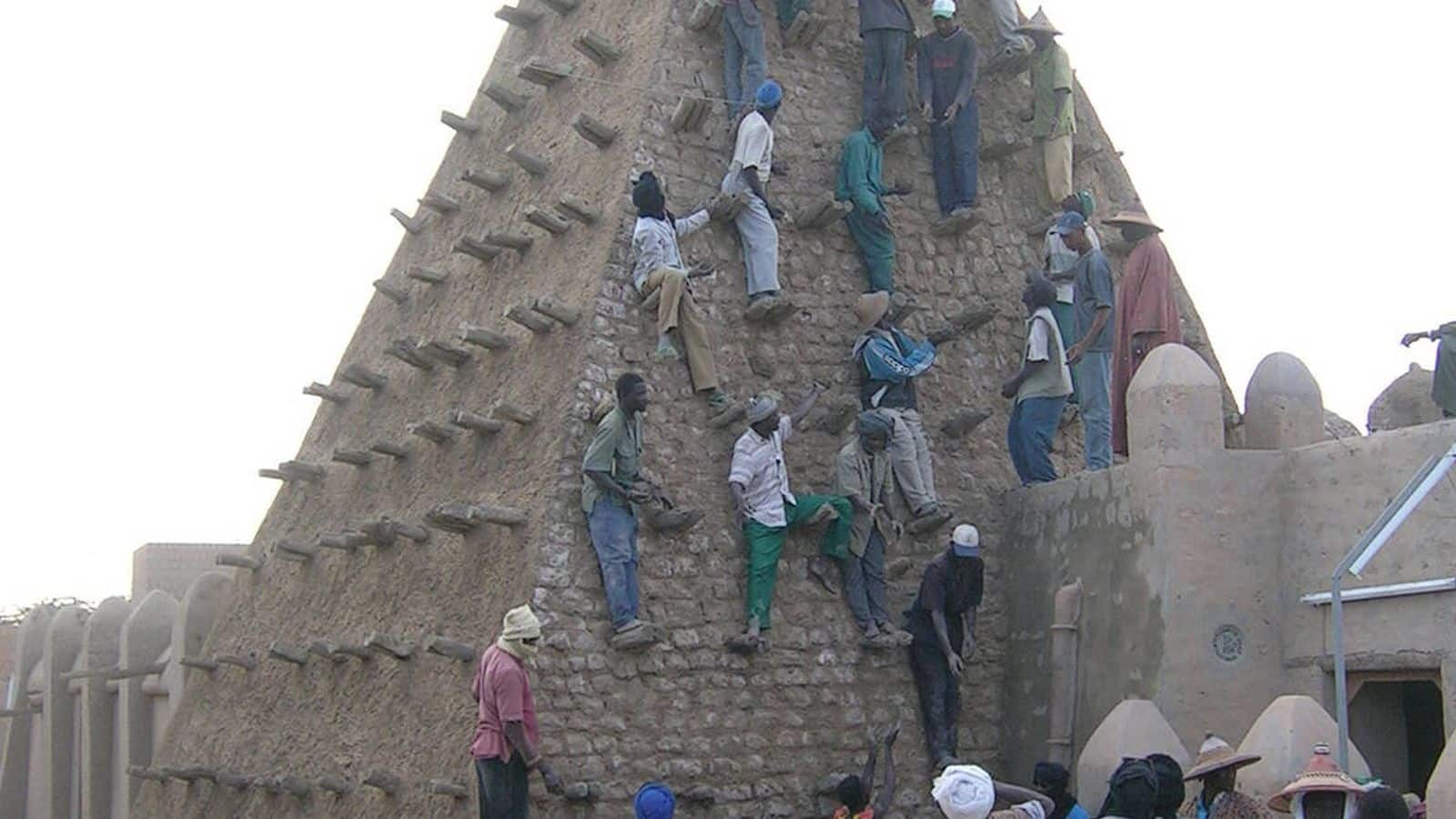
Take a journey through time and culture in Timbuktu, Mali
Timbuktu, positioned in Mali , West Africa , is steeped in a rich tapestry of legends and a storied past. This former thriving center of commerce and intellectual exchange now invites modern travelers to step back in time. Home to treasured ancient manuscripts, architecturally significant mosques, and the expansive Sahara, Timbuktu offers a cultural journey that is both unique and profound.
Explore ancient manuscripts
The Ahmed Baba Institute is home to thousands of ancient manuscripts that date back several centuries. These texts cover topics from science to philosophy. Visitors can take guided tours to learn about the preservation efforts and the historical significance of these documents. It's a rare opportunity to see firsthand how knowledge was shared across continents long ago.
Visit historic mosques
Timbuktu is famous for its three large mosques: Djinguereber, Sankore, and Sidi Yahia. Built from mud-brick in distinctive Sahelian architecture, these UNESCO World Heritage sites are not just places of worship but also symbols of the city's golden age as an Islamic learning center. While access inside might be restricted for non- Muslims , their impressive exteriors offer plenty of exploration opportunities.
Experience desert life
A journey to Timbuktu is incomplete without embracing the Sahara Desert's immensity. Camel treks are a favorite for visitors eager to see the stunning sunsets cresting the dunes or to experience a tranquil night beneath the starry sky at a desert camp. This adventure offers a serene escape and a bond with the natural world, far from the bustle of modern existence.
Engage with local culture
Engage with the Tuareg people to understand their nomadic ways and deep-rooted customs. A visit to bustling local markets or vibrant cultural festivals offers a glimpse into the everyday life of Timbuktu. These interactions are not only culturally enriching but also support the community. Purchasing local handmade crafts is a way to appreciate and sustain Timbuktu's artistic legacy.
Timbuktu Tourism
- Things To Do in Timbuktu
- Timbuktu Itineraries
- Timbuktu Hotels
Exclusive Timbuktu Travel Guide, Mali
- Tombouctou Region
Timbuktu (pron.: /ˌtɪmbʌkˈtuː/), also spelled as Tinbuktu, Timbuctoo and Timbuktoo (Berber: ⵜⵉⵏⴱⵓⴽⵜⵓ;French: Tombouctou; Koyra Chiini: Tumbutu), is a historical and still-inhabited city in the West African nation of Mali, situated 20 km (12 mi) north of the River Niger on the southern edge of the Sahara Desert. The town is the capital of the Timbuktu Region, one of the eight administrative regions of Mali. It had a population of 54,453 in the 2009 census. Starting out as a seasonal settlement, Timbuktu became a permanent settlement early in the 12th century. After a shift in trading routes, Timbuktu flourished from the trade in salt, gold, ivory and slaves. It became part of the Mali Empire early in the 14th century. In the first half of the 15th century the Tuareg tribes took control of the city for a short period until the expanding Songhai Empire absorbed the city in 1468. A Moroccan army defeated the Songhai in 1591, and made Timbuktu, rather than Gao, their capital. The invaders established a new ruling class, the Arma, who after 1612 became virtually independent of Morocco. However, the golden age of the city, during which it was a major learning and cultural center of the Mali empire, was over and it entered a long period of decline. Different tribes governed until the French took over in 1893, a situation that lasted until it became part of the current Republic of Mali in 1960. Presently, Timbuktu is impoverished and suffers from desertification. In its Golden Age, the town's numerous Islamic scholars and extensive trading network made possible an important book trade: together with the campuses of the Sankore Madrasah, an Islamic university, this established Timbuktu as a scholarly centre in Africa. Several notable historic writers, such as Shabeni and Leo Africanus, have described Timbuktu. These stories fueled speculation in Europe, where the city's reputation shifted from being extremely rich to being mysterious. This reputation overshadows the town itself in modern times, to the point where it is best known in Western culture as an expression for a distant or outlandish place.
Timbuktu Trip Planner
Plan your customized day by day trip plan for Timbuktu. Choose from various experinces categories as adventure, romantic and family and kids friendly for your trip using using Timbuktu trip planner.
- THINGS TO DO
- HOW TO REACH
- TOP RESTAURANTS
De-Mystifing the Mysterious City
- tips on driving
- Communications
- What You Can Buy
- Am I getting Ripped Off?
- Who lives in Timbuktu
- Hi I'm a Tuareg
- Language Primer
- Responsible Tourism
- Books, Music, Resources
- Malian Embassies in the World
- Embassies in Mali
- Orgins of Timbuktu
- Trades and Crafts
- 333 Saints of Timbuktu
- Comming of Age
- Moroccan Wells
- Ingredients
- Where to Stay
- Where to Eat
- In the region of Timbuktu
- 2012 Rebellion
Timbuktu at a Glance
Is Mali safe in 2024?
By Joan Torres 22 Comments Last updated on April 5, 2024
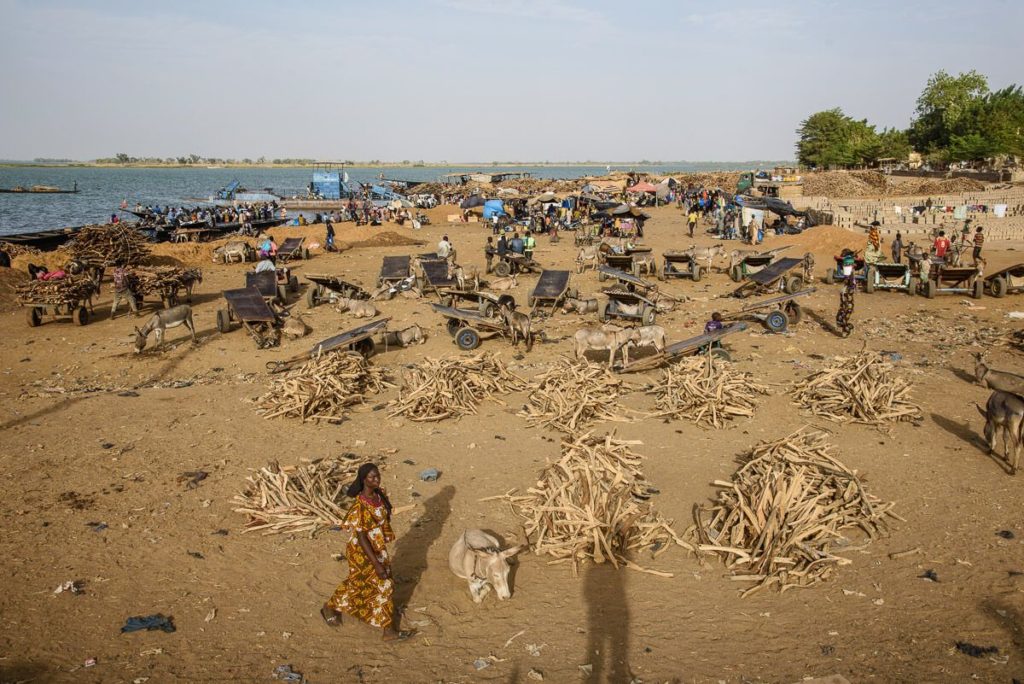
This is a comprehensive analysis of travel safety in Mali , which I think is strictly necessary.
Unlike some destinations in the Middle East where most travel warnings and advice tend to be biased or even unrealistic, I personally believe that Mali is one place where you need to be careful and well-informed about the latest security updates.
There have been reports about tourists being kidnapped, and random road attacks are common, even in popular – and not that remote – areas like the Dogon Country.
The thing is that in Mali, there is an ongoing conflict but, at the same time, there is very little information about it, which means that some extra care is recommended.
Nevertheless, with a bit of planning, Mali can safe to visit, and this guide will tell you everything you need to know about it.
For all the practical information, don’t forget to check my Mali travel guide

In this Mali safety guide you will find:
Table of Contents
- Differences from the Middle East
- Safety per area
- Safety tips
- More information
Insurance for traveling in Mali I strongly recommend IATI Insurance : COVID-19 + full Mali coverage + 5% discount BUY IT HERE TO GET YOUR SPECIAL DISCOUNT
Is it safe to travel to Mali? The situation today
Mali is currently immersed in a bloody conflict which, according to experts, doesn’t seem to be ending any time soon.
Like many countries in Africa, Mali is ethnically diverse , so it all started when the Tuaregs living in the forgotten north, a region with some of the poorest infrastructure in the country, began a rebellion in 2012, while claiming greater autonomy.
Apparently, the way in which the central Government handled the Tuareg uprising was disastrous and that was the last straw, after which the Malian Army decided to carry out a coup d’état against the former President, a chaotic moment which the Tuaregs took advantage of by occupying the main cities in the north, including Gao, Timbuktu and Kidal.
Consequently, the Tuaregs proclaimed north Mali independent from south Mali, naming it Azawad, hence becoming an unrecognized country .
The Tuaregs, however, were not alone in this fight but were backed by a bunch of Islamic groups linked to Al Qaeda Maghreb but, once the brand-new State of Azawad was created, they never managed to agree on the way forward, so they started fighting each other until the Tuaregs lost most of their territory to the Islamic rebels, who began to impose their Sharia law across the north.
Since then, both Malian and foreign armies have been fighting those Islamic groups. Over the years, the French Army managed to push them to the far north, and allegedly, the French will withdraw their troops soon.
However, from a traveling perspective, the problem isn’t the actual fighting but most issues and attacks which may affect tourists occur randomly and are caused by Malians who are not directly linked to the conflict but they may kidnap a foreigner because they believe they can make money out of it.
But don’t panic. As long as you avoid certain regions and travel with caution, Mali is safe to travel.
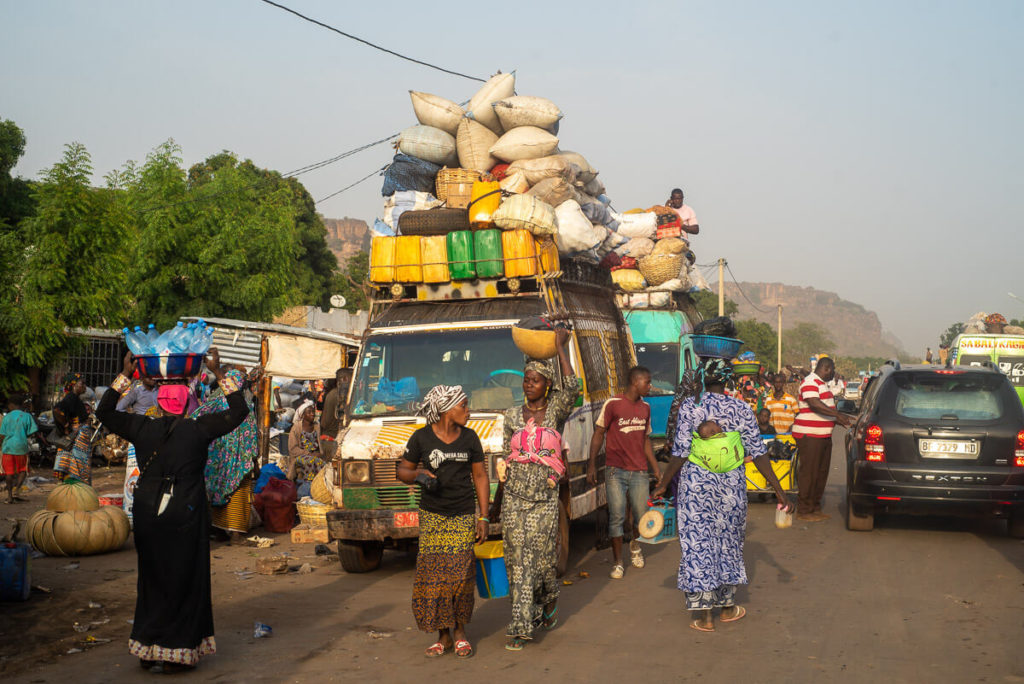
How safe is Mali to visit? Mali vs the Middle East
Don’t forget to read my SAFE travel itinerary for Mali
From an experience standpoint, in Mali I had mixed feelings.
On the one hand, when I traveled to supposedly safe areas, things were fine as usual: people were friendly, appeared to carry on with their lives, and there were no signs of crime. Everything seemed so peaceful.
However, after all my years of travels, in which I have visited countries like Syria or Somalia , Mali was the only place where I have been slightly worried about my own safety.
Really, first time ever was the day I traveled from Ségou to Djenné by road , and the reason was that, safety and security-wise, traveling in Mali is different from traveling in the Middle East . Here’s why:
To put you in context, Djenné is a town located in Central Mali, in an area where all governments advise against all travel, since Islamic-controlled villages are located less than 20km away and the road connecting Ségou with Djenné has suffered from sporadic attacks. Nevertheless, nothing has ever happened within Djenné itself.
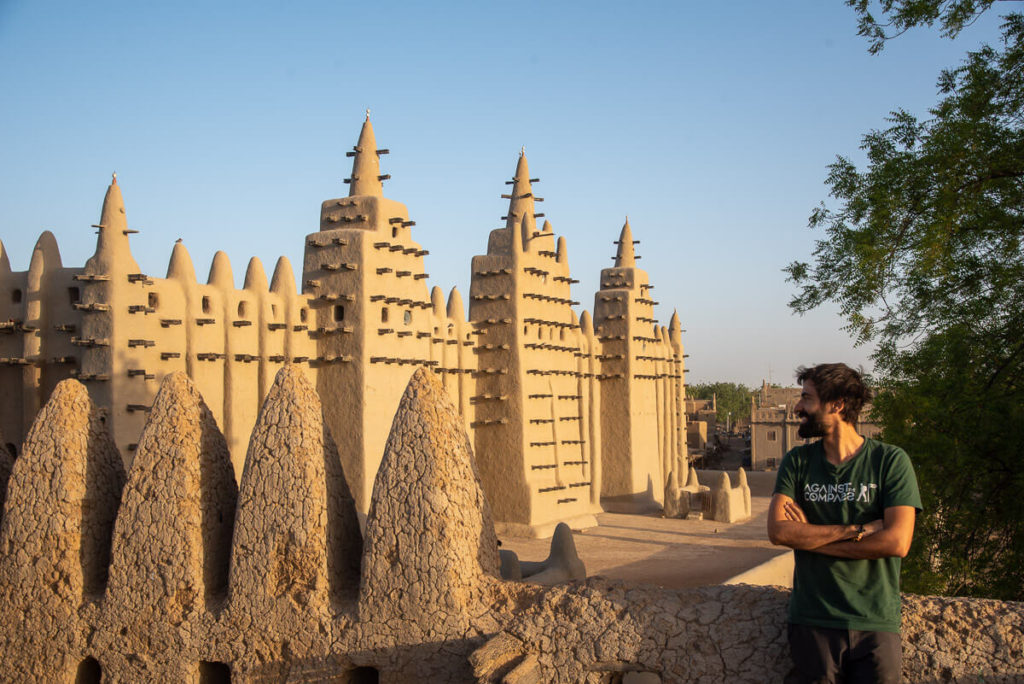
In Mali, you get so much contradictory information
One of the reasons I felt skeptical about going to Djenné was that I was constantly getting different types of information:
- Locals from Bamako said it was dangerous for foreigners
- Foreigners living in Bamako said I was completely insane
- Locals from Ségou, a city relatively close to Djenné, claimed it was super safe to go
- Experienced travelers acknowledged that there was some risk involved but with a bit of care and a local guide, I should be fine.
And even within these groups, they all had different versions of the story.
I trust experienced travelers the most because, first, they have actually been there, and second, the smart ones will always do a fair amount of research prior to their trip.
Still, since everybody had a different opinion, I could be nothing but concerned and that’s OK.
In Mali, the level of security is poor
In Pakistan , Syria , Iraqi Kurdistan or even in relatively peaceful countries like Lebanon , you find checkpoints absolutely everywhere and, as a traveler, that’s something you should truly appreciate because the police/army is usually there for the country’s safety.
On the contrary, despite the ongoing conflict and being one of the most problematic countries in the world, the security in Mali sucks, like really sucks. In fact, this is something the French Army has been complaining about since it all started.
For example, on the 300km road from Ségou to Djenné, some serious attacks have been reported but you barely find any checkpoints. In fact, in the Mopti-Djenné intersection, which is where those accidents happened, upon our arrival we just drove through the checkpoint because the soldiers were sleeping, literally.
This means that Jihadists can roam around freely and makes you seriously question Mali’s travel safety.
There is no on-the-ground intelligence and nobody knows what is actually going on
Another peculiarity about Mali compared to the Middle East is that you can never get any accurate information about what is actually happening.
For example, when I asked about who perpetrated the attacks on the road to Djenné, some Malians said they were just bandits, while others affirmed they were Jihadists. Foreigners would just say that nobody knows, like most incidents taking place in Mali.
A similar thing happened when I asked about why Djenné itself has always kept safe, despite the poor level of security.
Because God is protecting us – some Malians said
Because Djenné is too holy – other Malians said
I never managed to get a proper answer but, in Bamako, I met a British man who turned out to be a trainer for the Malian police, and he said that the reason why some towns are not being taken might be purely tribal, meaning that some towns and villages are ruled by certain families and tribes who the Jihadists don’t want to mess with.
While this may seem like a reasonable motive, I still find the situation to be highly ambiguous, and that’s the scary thing about Mali.

How dangerous is Mali? Safety by region
As I said, safety in Mali largely depends on the region you may be heading to.
Technically, everywhere in southern Mali is safe for tourists, which in my eyes, comprises the area south of Bamako.
Is Bamako safe?
Bamako gained a bad reputation internationally after the 2015 attacks , but nothing has happened since then and, besides regular petty crime – but far less than other African cities – Bamako is a safe city to visit.
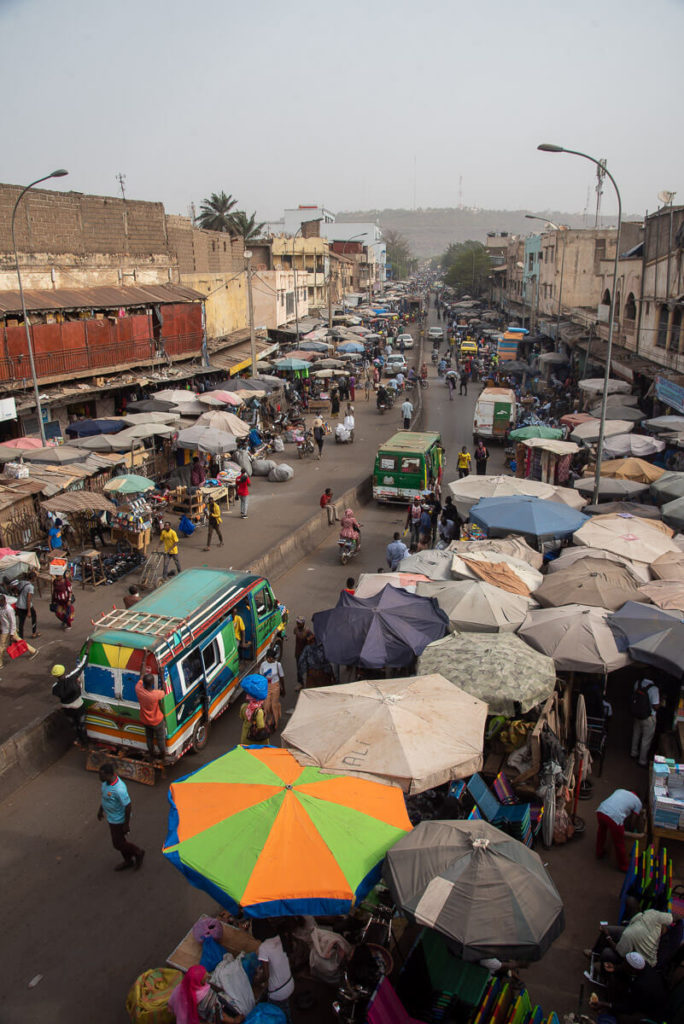
Is Siby safe?
Siby is a peaceful area 50km south of Bamako characterized by unusual rock formations and timeless, unspoiled villages. I think it’s one of the safest places to visit in Mali.
More SAFE places to visit in the south of Mali:
- Sikasso – A trading town that developed for being right at the intersection between Ivory Coast and Burkina Faso
- Manantali – A lake area 300km south of Bamako

Central Mali
The central part of Mali can be more sketchy and that’s where your travel experience counts the most.
Is Ségou safe?
Ségou is a lovely town on the shores of the Niger River and the safest tourist town within Central Mali. It can be done independently without any problem.
Across the Niger River from Ségou When I was in Ségou, I felt like taking one of the local boats to the other side of the river but the locals warned me it was dangerous to go because Jihadists weren’t far from that area. Not even local guides wanted to take me there so, once again, before adventuring yourself into a new area, do ask for the latest security updates.
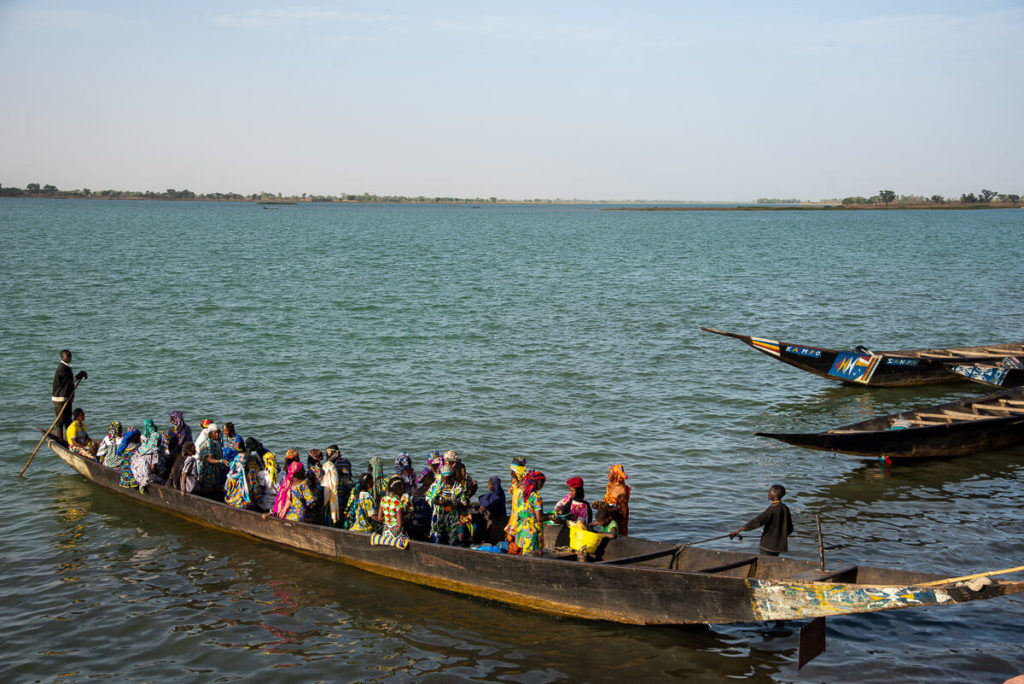
Is Djenné safe?
I already told you about Djenné in the previous section, so you know what it is.
The only thing to add is that don’t believe those travelers who say that Djenné is safe just because it feels so. Everywhere feels safe until it’s not and Djenné felt suspiciously safe, so travel there with caution and do hire a local guide.
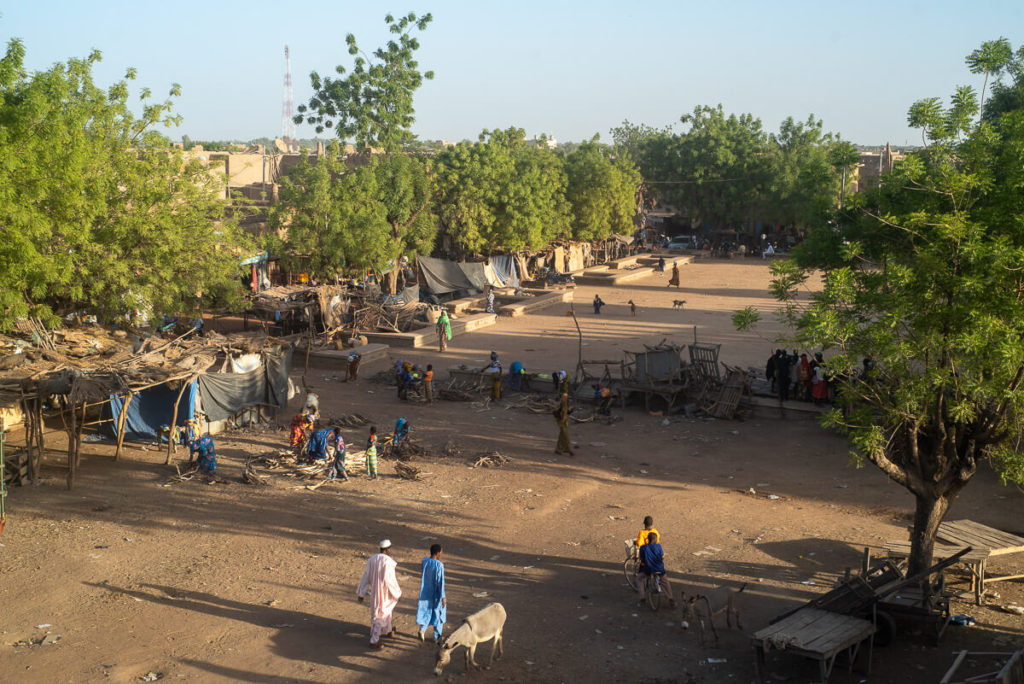
Is Mopti safe?
Apparently, Mopti itself is safe but consider it as safe as Djenné.
Moreover, Mopti is the limit between central and north Mali. Twenty kilometers after Mopti, in a town named Sévare, is where the actual war zone starts and where you are likely to see tanks and UN armored vehicles.
More SAFE places to visit in central Mali:
- Dougouba – A lovely village home to an impressive mud mosque
- San – We stopped in San on the way back from Djenné to check out its Grand Mosque
By the way, on the road between Mopti and Gao, a tourist was kidnapped but you won’t find it in the news, as it usually happens with these type of incidents.
Once the most visited region in the country, northern Mali has remained almost inaccessible since 2012.
However, bear in mind that potential dangers in northern Mali aren’t bombs and rockets but road assaults and kidnappings.
Is Timbuktu safe?
You would be surprised to know that nowadays, Timbuktu itself is relatively safe but attempting to travel there by road is a guaranteed one-way ticket. Instead, fearless travelers who are willing to take some risk can go to Timbuktu by:
- Plane – Usually, on a charter UN flight. Many local fixers/guides can get you a ticket.
- Boat – Riskier than by plane, but doable. From Mopti, it takes 3-4 days and you also must arrange it through a local fixer.
Is Dogon Country safe?
Sadly, one of the country’s highlights is today a big no-go zone. While my guide took me to Djenné and also wanted to take me to Mopti and Timbuktu by boat, he would not risk taking anyone to Dogon Country, since road attacks are frequent due to internal ethnic conflicts.
Check my Mali travel itinerary to see the places I visited
Further tips to travel safe in Mali
Based on the above comprehensive analysis, here are some additional tips:
When you visit an area where safety can be a concern, don’t stay there for long, 1 night max
As strange as it sounds, kidnappings and other random attacks are usually planned so, in a place like Djenné, it’s recommended not to stay for long, so potential bad guys won’t find out about your arrival.
Ask for the latest security updates in the city closest to your final destination
Not back home, not in Bamako because the information won’t be accurate.
For example, if you want to go to Djenné or Dogon Country, Ségou is a good place to ask for the latest information. If I wanted to go to Timbuktu, I would ask in Mopti.
Do hire a local guide when necessary
I have always been skeptical about hiring a local guide but, in countries like Mali, it can prove very useful, plus traveling with a local guide is not traveling on a tour but more like with a local friend who speaks the language. Anyways, in places like Djenné, I believe a guide is necessary because:
- You will be noticed less
- He is well connected and gets the latest security updates
Remember to get Travel Insurance for Mali I strongly recommend IATI Insurance : COVID-19 + full Mali coverage + 5% discount BUY IT HERE TO GET YOUR SPECIAL DISCOUNT

Conclusion: Is safe to travel to Mali, or not?
Mali can be safe, depends on where you travel to but the most important thing to keep in mind is that the situation is so unstable and volatile, and a place which today is safe may not be on the day after so always do some proper research before taking such a trip.
More information for traveling safely in Mali
📢 In my Travel Resources Page you can find the list of all the sites and services I use to book hotels, tours, travel insurance and more.
All our guides to Mali
- Mali Travel Guide
- Mali Itinerary
Check more safety guides
- Is Afghanistan Safe?
- Is Iran Safe?
- Is Iraq Safe?
- Is Lebanon Safe?
- Is Mauritania Safe?
- Is Middle East Safe?
- Is Oman Safe?
- Is Pakistan Safe?
- Is Sudan Safe?
- Is Syria Safe?
- Is Tunisia Safe?
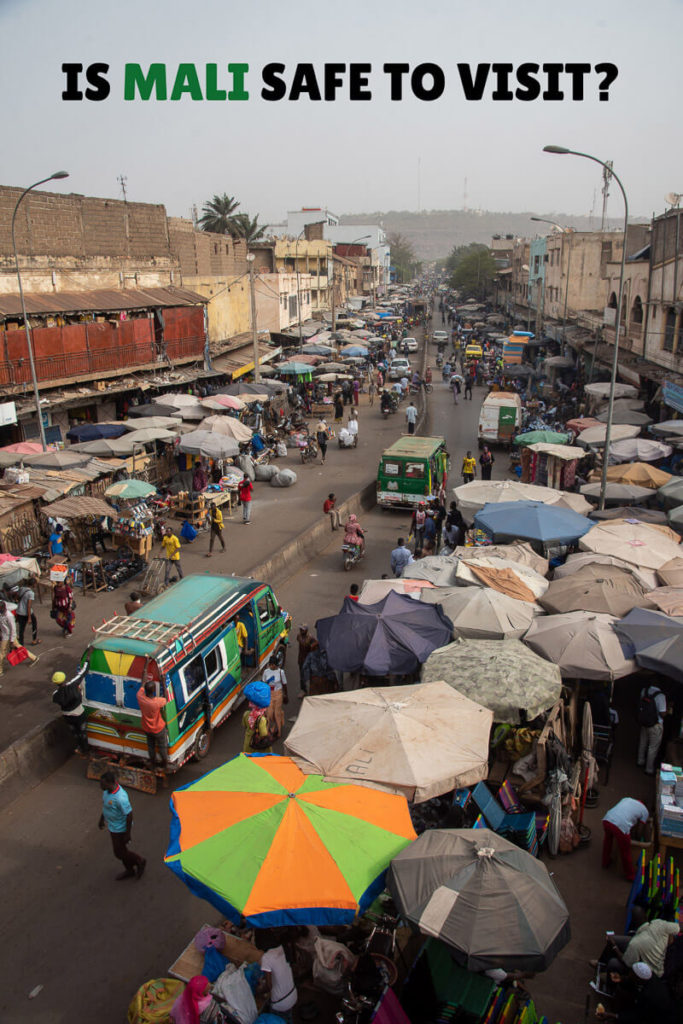
22 comments
Hi Joan, Great to read some sensible advice about Mali. And from someone who has been recently. I’m driving into Mali from Senegal next week. Was hoping to go into Mauritania via Gogui. But just seen the French government website particularly warns about the road up to Nioro du Sahel. Do you have any knowledge about that route? Or do you have any contact in the Kaye’s region who might have up to date info on safety? Thanks. Simon (Irlandés de la Coruña)
Read “six years a hostage” written by Stephen McGown you even’t wouldn’t think about Mali. Don’t think everybody would get along with those types of endurances.
Hello Joan, I am planning a trip to Mali on April.
Could you please give me the contact of the guide you hired? do you believe he is 100% reliable?
Thank you very much
Hi, you can contact my friend Amidou on IG: @amidou708 – 100% reliable
Hi Joan, Would you change your advice, or would your experience have been different if you were a woman?
Hello Victoria, in terms of security, we are talking about a major terrorism threat here, and I don’t think there’s any gender difference here when it comes to safety. As per the country’s overall experience, sure, if you are a woman you will have a different, more challenging experience but that’s not because of Mali, but that’s just in any Muslim country, from Egypt to Jordan, Pakistan and Mauritania.
I want to ride my motorcycle from Bamako to Timbuktu. In 2015, I made it to Segou without a problem but then decided not to push my luck considering what happened a week early at the Radison Blue. What are the actual threats on the road to Timbuktu? You refer to it as a one way (suicidal) trip. Do the bandits and terrorist set up road blocks? Are there any military protected convoys I can join? Any safer options……I really want to go there since I was a child.
Hi Edward. If I had to name one single dangerous place in the world is the road from Mopti to Timbuktu.
For going to Timbuktu, you can either take a charter plane or by boat, with the right contacts.
Hi Joan, I’ve been in Mali 4 times, last time November 2021, totally agree with all you have written here. The only thing I would add is, that it is wise not to disguise travel plans and destinations to strangers. When anybody was asking me where I’m going to go I was always giving a false direction. I plan to go back there in February 2023 for Segou Art Festival on Niger.
Hi, I am interested in travelling to The Hand Of Fatima to go climbing for a few weeks in the one remote place. Would you consider this area to risky to travel too? Thanks Chris
Hi Chris, that’s in a very turbulent area where I wouldn’t advice going
Forgot to update from 2 years ago. We missed an attack on the road to Gogui by minutes. Either bandits or jihadis, depending who you ask. Also, Sikasso. We were urgently recommended to leave, both by people from a NGO and the locals. There are jihadi groups in the area and a danger of kidnapping. Probably true in most areas. Mali is a great country to travel in, but you have to be aware of the risks. Talk to people. Talk to everyone. The police are helpful, though sometimes cryptic. Find the pub. People like to talk. And drinkers tend to be Christian or bad Muslims, so aren’t generally sympathetic to Jihad. Catholic missions too, for the same reason. I prefer Burkino Faso, while it has the same dangers I didn’t feel the stress of an imminent threat like in Mali. (Hola Joan. Me gusta mucho a tu trabajo y consejos. Soy irlandés de la Coruña. )
Hello thank you for explaining it helps a lot. Do you have any idea about Hombori town. Thanks appreciate your work .
Hi Theo, as far as I know, that area of Mali is not safe
Have you heard anything about safe tourism to Gao? Sky Mali flies there often from Bamako. Please let me know. Thanks for making so many travel dreams come true 😊
Hello Michael, I heard the city itself is safe but not the surroundings, and I don’t have first-hand experience
H thanks for this – I would like to go to West Mali from Senegal, and visit Kayes and Kita , as I am interested in the musical culture there. Do you have any ideas on the safety here please? Thanks
Those areas should be OK
Hello. Is Bamako safe at the moment? What’s the latest situation
Bamako is 100% fine
Hi, I’m glad I found your site, great info. I was thinking about traveling to south Burkina by road. Would there be any safe route crossing Mali from Mauritalia to Burkina? Thank you very much for your website!
There’s no 100% safe route but the Mauritania / Mali border that takes you to Kayes is the most transited one and then, from Mali to Burkina is at Sikasso.
Leave a Comment Cancel reply
Your email address will not be published. Required fields are marked *
Notify me when new comments are added.
Join our Expeditions
From Syria to Iraq in Pakistan, Against the Compass is finally running expeditions to the most epic and off-the-beaten-track countries.
We have scheduled expeditions for every month of the year.
Latest posts
- Backpacking Venezuela Travel Guide (2024)
- How to travel to Afghanistan during Taliban rule (2024)
- How to visit Los Llanos in Venezuela
- How to visit Angel Falls and Canaima National Park
- Things to do in Haiti in a 1-week itinerary
- Middle East
- Global development
Mali: the tour guide of Timbuktu – video
.png)
Source: IRIN
Mon 1 Jul 2013 13.48 BST First published on Mon 1 Jul 2013 13.48 BST
- Share on Facebook
- Share on Twitter
- Share via Email
- Life in Timbuktu after the Islamist occupation
- Conflict and arms
Most popular
.png)
Stay Informed
Want to help enter your email below and we’ll be sure to ping you with updates..
Thanks for subscribing!

A short film narrated by Morgan Freeman
For centuries Timbuktu was a symbol of world-renowned scholarship, innovation, plurality, and tolerance – a city where the fertile banks of Niger River meets the Sahara Desert.
But in 2012, an al-Qaeda linked terrorist organization invaded and occupied this fabled city, humiliating the people, oppressing women and banning books, sports and education. The extremists even silenced the music, the very heart and soul of a country known as the birthplace of the Blues. Timbuktu and its surroundings are yet another casualty of the cancerous spread of violent extremism.
This story of Timbuktu is not one of defeat. Rather, it is one of rebirth and hope. Take a journey to Timbuktu in this short film and learn how a proud and determined society is countering the spread of violent extremism using its deeply rooted cultural legacy to inspire the world.

You’ve already heard the music of Timbuktu… you just may not realize it.
After all, it was here in this part of western Africa that musicians and griots (traditional storytellers and poets) created a sound so powerful it traveled from the Niger Delta to the Mississippi Delta… to the entire world. Today, we know this music as the Blues.
This musical heritage was celebrated yearly at the renowned Festival au Désert. Drawing fans from around the world, African musicians shared the stage with rock legends like Bono, Robert Plant, Damon Albarn and Jimmy Buffet. But due to the 2012 crisis, the Festival au Désert became a touring Festival-in-Exile – an international loudspeaker for a message of tolerance, development and resilience in Mali and around the world. The message grew louder with every additional supporter, flourishing into a movement that became mission for a renaissance in Timbuktu.

Spread The Word
The Timbuktu Renaissance needs you. Please help by sharing this film and site with your friends.
Over 1,000 years ago, as Timbuktu grew into a bustling Saharan trade-hub of gold, grain, livestock, and salt, it also became Africa’s capital of something much more valuable: knowledge.
It was here in Timbuktu that one of the world’s most grand universities came to be – as well as an astonishing written record of intellectual achievement. These hundreds of thousands of manuscripts cover centuries of medicine, theology, philosophy, astronomy, poetry, literature and jurisprudence, on par with the Italian Renaissance.
During the occupation, extremists attempted to loot and destroy the priceless manuscript libraries and impose a perverse version of Islam. Timbuktu Renaissance has joined forces to preserve and digitized the manuscripts, as well as lay the groundwork for the rebirth of the famed University in Timbuktu. Standing as a permanent center of enlightenment, the University's motto will be: "Light is my will."

DID YOU KNOW?
Timbuktu has long been considered the birthplace of the Blues.

Agriculture and Natural resources
The Mali Empire was one of the most prosperous kingdoms in history. In fact, one of its rulers – Mansa Moussa – is considered by experts as the richest person in history. The gold was the stuff of legend. Less glamorous but equally important was agriculture and livestock.
Today, agriculture is one of the most important sectors in Mali, providing livelihoods for 80% of the population. With a convergence of rivers, groundwater, sunlight, indigenous phosphates & fertilizers and abundant land, Mali – despite a harsh and changing climate – still has the potential to contribute to global food security.
Timbuktu Renaissance supports the modernizing of Mali’s agriculture and natural resource sectors in the face of challenging demographic and environmental pressures, as a crucial component of creating jobs and promoting peace and prosperity in the region.

More information about the Timbuktu Renaissance is available in this Brookings Institution article: The Timbuktu Renaissance
Tourism, Arts and Crafts
Stunning landscapes, wildlife, rivers, mountains, savanna and desert. Historic buildings and antiquity. Intricate, exotic art. Beautiful music. There are many reasons Mali should be a destination for tourists from across the globe. But the insecurity has prompted Western governments to declare Timbuktu and much of Sahel and Sahara off limits.
Laying the groundwork for a revival of the tourism industry is a top priority for Timbuktu Renaissance. By reestablishing the Festival au Désert, empowering local efforts to restore and protect UNESCO World Heritage sites, supporting the digitization, translation, and study of thousands of priceless manuscripts, and the creation of a modern cultural and innovation center in the heart of Timbuktu are key parts of the strategy.

- Welcome to Mali
- 11 days: Ghana Togo Benin
- 14 days: Togo – Benin – Burkina Faso
- 9 days : Discovering Mali
- 9 Days: Timbuktu to Dogon Country
- 12 days: Mali + Burkina-Faso
- 13 days: the Great Tour
- 14 days: along the Niger river
- The Dogon Country
- Mopti, Venice of Mali
- Bamako, the capital
- Travel Advices
CARS AND 4x4 TO RENT
Please contact us:
Phone : 00 223 20 71 45 44 Phone : 00 223 76 44 14 93
SimpleViewer Gallery Id 10 has been deleted.
Glorious past
Mythical city among the mythical cities in the world, Timbuktu owes its incredible aura to its past as the trade and religious capital of Sahara. Back in the mid-fourteenth century, the city had over 100,000 inhabitants: scholars, intellectuals and merchants from all over the world.
“Mysterious city,” “Black Pearl of the Desert,” “Athens of Africa”, “Mecca of the Sahara,” “Rome Sudanese” … Explorers and travelers have never had enough names to describe a city actually listed on the world heritage list by UNESCO.
Meet the desert
But Timbuktu is also a unique architectural style. The ornamentation of doors and windows of the city is particularly refined. In Timbuktu, you are at the end of the world, close to the desert. The perfect place for a camel ride in the Sahara, to meet the Tuareg people, the mysterious “blue men” …
Share Your Experience!
Have you ever been to Timbuktu? What did you enjoy the most during your trip? How was the desert? Please write a comment in the form below so the other travelers can find some advices and tips before they go. And we really would like to know your feeling about this destination. Thank you!
Contact Us | Terms of Use | Trademarks | © 2019 Mali Travel ToursAll Rights Reserved, texts pictures graphics Licence : N°03- 007/VS/CNPI-GU Commercial Identification Number : MA.Bko2003 B 916
REALISATION DU SITE ET REFERENCEMENT : MAPAMUNDI COMMUNICATION .

Home » Travel Guides » Mali » 15 Best Places to Visit in Mali
15 Best Places to Visit in Mali
Mali is a land of many cultures and creeds; a dash of life and action and heritage and history that’s sandwiched between the rolling Sahel and the endless dunes of the Sahara Desert.
From the salt-caked outposts of Taoudenni in the north to the throbbing market town of Sikasso in the south, the lion-spotted reaches of Boucle de Baoulé in the west to the protected swathes of Ansongo in the east, there’s everything from time-stood-still tribal villages to groaning camel caravans to experience here.
Meanwhile, the capital at Bamako is surely one of the continent’s most enthralling.
Beer bars and local music dives erupt between the traffic-choked streets; bazaars and brilliant markets pop up on the corners.
Oh, and that’s not even mentioning the mystery of Timbuktu! Unfortunately, recent conflicts have all but placed this fascinating country in the heart of West Africa out of bounds for would-be travelers.
Skirmishes and battles and political upheavals continue, and all the while Mali’s great natural and human beauties remain at risk…
Lets explore the best places to visit in Mali :
1. Timbuktu

For many a Berber trader and Bedouin caravan man Timbuktu marked the end of the arduous trek across the shifting sand dunes of the great Sahara.
Evoking mystery and magic and the feel of far-flung exoticism, even the name conjured up images of dusty bazaars where spices and sabres and strange folk trinkets rattled and scented the air.
Today, Timbuktu is hardly the puzzling, perplexing enigma of place it once was; but there are traces of the old days.
Find them between the criss-crossing grids of sand-caked streets; see them in the muddy walls of the Sankore Mosque; or discover them underneath the spiked rises of the Djingareiber.

Gao’s fortunes have ebbed and flowed over the centuries like the ups and downs of a yoyo.
Once the imperial heart of the great Songhai Empire, the town was later almost entirely abandoned in favour of the new capital at aforementioned Timbuktu.
But Gao clung to life from its place in the very midst of the dusty Sahel.
Its tenacious locals maintained their mud-brick, mat-built yurts and life went on.
Today, that makes Gao a great place to glimpse the earthy, ancient character of Mali, while craft markets, the acclaimed Sahel Museum, and 15th-century sepulchres like the Askia Tomb (yep, it’s supposed to look like Egypt’s pyramids!) add a whole host of cultural draws to the mix.

Get the haggling valves and the shopping glands ready for that trip to Bamako: Mali’s largest and most frenetic city, where bazaars touting everything from carved folklore figurines to stacks of pungent spices cluster around the street corners and the sun-baked squares.
The nation’s capital, there’s something undeniably likable about this sprawling metropolis of more than 1.5 million.
It’s got palpable energy and an indelible lived-in feel.
The nightlife pulses to a medley of West African samba; the jazz bars are packed with beer drinkers on the weekends; fried plantains sizzle on grills from neighbourhood to neighbourhood; tuk-tuks purr, and traffic toots!

There are few sites in all of Mali – nay, all of north-west Africa – as impressive as the historic city of Djenné.
Crowned at the center by the adobe rises of one fascinating Great Mosque, it is known for its distinctive mud-brick architecture and long history as a spot on the old caravan routes across the Sahel and Sahara.
Made rich by the passing of minerals and precious metals (and – of course – slaves), the town boomed during the 15th and 16th centuries.
The great worshipping house in its heart stands as testimony to the revered religious center Djenné became (even though it’s a later reconstruction of an older mosque), while the nearby archaeological excavations at Djenné-Djenno have shown the town to be one of the oldest in the entire Niger basin.

Straddling the courses of the Bani River, just a stone’s throw from where that desert-shrouded tributary meets the mighty Niger, Mopti has positioned itself as one of Mali’s most important riparian ports.
But Mopti is also more than just an up-river trading center – it’s also the gateway to the fascinating tribal territories of Dogon, which come peppered with adobe villages and the semi-nomadic folk of the Bandiagara Escarpment.
There are oodles (and we mean oodles) of tour providers in Mopto, offering trips into this wild hinterland for cultural encounters, while boat trips to Timbuktu and sightseeing outings around the marketplaces and grand central mosques are also on the menu.

Small little Ségou is a town of just over 130,000 people.
It was once the beating epicentre of the Bambara Kingdom – a power that ruled over the lands of central Mali until around the turn of the 19th century.
Today, its prowess and capital title are gone, but the city still has a few relics from that glorious time.
Check out the tomb of Biton Mamary Coulibaly, the onetime monarch of the Bambaras, or the bustling port sides, which were once the trading powerhouse of the town.
Ségou is also famed for its wealth of charming French colonial architecture.
This can be found fringing the inner streets in a medley of Parisian facades and romantic governmental houses.

Rising in a wall of ochre-hued stone from the midst of the Sahelian wilds of south-central Mali, the great escarpment of rock known as Mount Hombori is like West Africa’s answer to Australia’s Uluru.
It hulks above the horizon just a short distance from the town of the same name; a place of creaking wagons, winding alleyways and low-rise rock homes inhabited by the welcoming Dogon peoples.
The biggest pull is certainly the great bluff though, and travelers now flock here to join intrepid 4X4 excursions into the sands, or to unearth the fascinating past currently being uncovered by archaeologists in the cave systems that carve their way deep into the mountain’s subterrane.

Sikasso is, and always has been, a mercantile town at heart.
Nestled close to the multi-state join of Burkina Faso, Ivory Coast and Guinea, it’s benefited from a location that’s able to connect Africa’s landlocked heart with the ports that pepper the Atlantic seaboard.
That trading history still pops up today, between the throbbing and frenetic fruit and veg markets that erupt ad hoc on virtually every block right throughout the week.
And Sikasso also has one other claim to fame.
In the late 19th century it was raised to the status of imperial capital; an honour decided on by king Tieba Traoré, whose own mother hailed from the spot.
The rises of Mamelon Hill are the place to go to trace that story.

Delineated by the meanders of the Senegal River, Kayes continues to bustle and thrum to the sound of market traders and salesmen.
In fact, the passage of goods was the very raison d’être (notice the language) for the town, which was first built up by the French in the 1880s to facilitate the movement of produce to and fro from neighbouring West African countries.
Travelers can come and wallow in the lively vibes of the place, seek out little trinkets and multi-coloured fruits and vegetables in the market, and sip coffees in the shadow of pretty Parisian-style builds.
And away from the town there are even more points of interest, like the Félou Falls, the roaring cataracts of the Gouina Falls, and the relics of the formidable Medina Fort.
10. Boucle du Baoulé National Park

Sprawling out over nearly one million hectares in the middle of West Africa’s wildlife-rich Sudano-Guinean zone, the Boucle du Baoulé National Park is unquestionably one of the jewels of the Malian hinterland.
The territory can be found close to the town of Kayes, cut through by rising ridges of Sahelian rocks and peppered with the remains of countless pre-historic troglodyte settlements.
And despite recent troubles scaring away most of the eco-tourists, the fauna has hardly changed.
Expect giraffes and rare simians, gazelles and even the occasional lion!
11. Ansongo

Occupying the western edge of the great nature reserve which shares its name (and the name of the town of Menaka on the far eastern side of the park’s boundaries), Ansongo is perhaps the youngest of all the places on this list.
Far from being one of Mali’s fabled imperial centers, this one was purpose-built back in 1996. The reason? To cultivate the fertile Sahelian plains that roll out to the north, west, east and south.
That means visitors can spot camel herds grazing and sorghum grasses swaying all along the flood plains of the Niger River here.
And when it’s time to hit the aforementioned reserve of Faune D’Ansongo-Menake, you can look forward to gazelles and hippos, crocs and sand cats.

One of the major hot points in the recent factional struggles that have beset Mali, Kidal sits deep in the region of the Azawad – the territory that unilaterally declared independence back in 2012 to trigger some of the bloodiest conflicts the heart of central West Africa has seen in recent years.
However, its lately troubles aside, Kidal remains a place steeped in the traditions of the Tuaregs nomad folk, who still inhabit the vast sand plains of the greater Kidal Region.
And the city showcases their traditions too, in both architecture and craft making.
Oh, and be sure to check out the remnants of the French colonial fortress in the city before departing!
13. Douentza

Encompassed by otherworldly landscapes of carved rock bluffs and dust-devil-scarred plains, the region of Douentza is a great place to get to grips with the wildernesses that characterise the Malian Sahel.
Douentza town sits at the heart of it all, ticking over with its sleepy Berber vibes and small marketplaces.
Another point of great contention during Mali’s recent upheavals, this one has flitted between control of the Azawad liberators, the government and various Islamist groups in the past couple of years.
And while the military struggles continue to simmer, the hinterland here continues to host the traipsing Gourma elephants, who pass this way on their annual migration – what a sight!
14. Bandiagara

Like Mopti before it, Bandiagara is the place to go for cultural encounters with the Dogon folk of the Malian plateaux.
Little more than a trading town with a few humble marketplaces and emporiums touting traditional Dogon trinkets and foodstuffs, the real draws actually lie away from the center here – except for that interesting Toucouleur imperial building on the central drag! We’re talking about the UNESCO-attested reaches of the great Bandiagara Escarpment.
This land of verdant plains and rock-ribbed cliffs is steeped in tribal history.
You’ll see the abandoned hamlets of the Tellem folk, mud-caked mosques carved into the mountains, and some of the most beautiful backcountry in the region!
15. Taoudenni

Taoudenni really is like nothing else in Mali.
Languishing out in the sun-scorched heart of the Sahara Desert, it continues to function for one purpose only: salt mining.
The settlement itself is actually constructed on the dried-up bed of an old saline lake.
Workers come to carve great slabs of salt from the earth, which are then loaded onto some of the last remaining camel caravans in the world and trekked south to Mopti and other trading cities.
There’s also the ruins of an old and infamous prison to see here, built in the 1960s by the onetime ruler Moussa Traoré.
15 Best Places to Visit in Mali:
- Boucle du Baoulé National Park

IMAGES
VIDEO
COMMENTS
The full moon dominates the landscape to the west - a yellow ball sinking into a heat of scrub and sand. In the east, the sun dapples the sky with its reddish shadow. As the mud and brick buildings begin to glow in the dawn light, Timbuktu comes to life. Read more about visiting the Great Mosque of Djenne, in Mali.
Timbuktu struggles to draw tourist revenue and develop tourism in a way that preserves the past—new construction near the mosques has prompted the World Heritage Committee to keep the site under ...
Things to Do in Timbuktu, Mali: See Tripadvisor's 57 traveler reviews and photos of Timbuktu tourist attractions. Find what to do today, this weekend, or in April. We have reviews of the best places to see in Timbuktu. Visit top-rated & must-see attractions.
Years of political unrest have halted tourism in the Malian city, so local guides are bringing Timbuktu to the world—through the mail. by Annie Risemberg June 1, 2022
4. Points of Interest & Landmarks. Bill. 1. Fishing Charters & Tours. Frequently Asked Questions about Timbuktu. Where should I stay in Timbuktu? Timbuktu Tourism: Tripadvisor has 57 reviews of Timbuktu Hotels, Attractions, and Restaurants making it your best Timbuktu resource.
Now a shadow of its former glory, Timbuktu—in modern-day Mali—strikes most travelers as humble and perhaps a bit run-down. ... Timbuktu struggles to draw tourist revenue and develop tourism in a way that preserves the past—new construction near the mosques has prompted the World Heritage Committee to keep the site under close surveillance.
Today, Timbuktu is an impoverished town, although its reputation makes it a tourist attraction, and it has an airport. It is one of the eight regions of Mali, home to the local governor. It is the sister city to Djenne (also in Mali). Timbuktu street scene. Timbuktu is a UNESCO World Heritage Site since 1988.
Tourist Attractions. One of the main attractions of Timbuktu is the Great Djinguereber Mosque. Built in the 14th century, this impressive mud-brick structure is an outstanding example of Sudanese-Sahelian architecture. Other points of interest include the Sidi Yahya Mosque and the Sankore Mosque, both equally impressive and filled with history.
One of the main attractions in Timbuktu is the famous Djinguereber Mosque. Built in the 14th century, this remarkable structure showcases the architectural brilliance of the Mali Empire. Its intricate design and towering minaret are a testament to the city's rich Islamic heritage.
Things to Do in Timbuktu, Mali: See Tripadvisor's 57 traveller reviews and photos of Timbuktu tourist attractions. Find what to do today, this weekend, or in April. ... Mali - Timbuktu Must-See Attractions. Things to Do in Timbuktu. Enter dates. Attractions. Filters. Sort. Map. Category types. Attractions. Tours. Outdoor Activities. Food & Drink.
Located at the gateway to the Sahara desert, within the confines of the fertile zone of the Sudan and in an exceptionally propitious site near to the river, Timbuktu is one of the cities of Africa whose name is the most heavily charged with history. Founded in the 5th century, the economic and cultural apogee of Timbuktu came about during ...
Today, Timbuktu is an impoverished town, although its reputation makes it a tourist attraction, and it has an airport. It is one of the eight regions of Mali, home to the local governor. It is the sister city to Djenne (also in Mali). Timbuktu is a UNESCO World Heritage Site since 1988. In 1990, it was added to the list of world heritage sites ...
Go ahead and visit any of these two to get an authentic experience interacting with Mali locals. There's even a music festival being held around the river where Mali's best performers gather now and then. 3. Visit Timbuktu. Photo by upyernoz CC BY 2.0.
La Dune Rose. Mali. Gao's premier tourist attraction is a sunset trip to La Dune Rose, known locally as Koïma, a wonderful sand dune on the right bank of the Niger, visible…. View more attractions. 02 / Articles.
Places to Visit in Timbuktu. 1. Djinguereber Mosque. There are not too many things to do in the legendary city, so, I enjoyed those places as much as I could.... 2. Mosque of Sankore. 3. Bill. Very personalbe and knowleable about fishing and catching large lake trout.
Timbuktu, positioned in Mali, West Africa, is steeped in a rich tapestry of legends and a storied past. ... Travel And Tourism. Latest 'Inside Out 2': How new emotions were finalized Hollywood.
Timbuktu Tourism Timbuktu (pron.: /ˌtɪmbʌkˈtuː/), also spelled as Tinbuktu, Timbuctoo and Timbuktoo (Berber: ⵜⵉⵏⴱⵓⴽⵜⵓ;French: Tombouctou; Koyra Chiini: Tumbutu), is a historical and still-inhabited city in the West African nation of Mali, situated 20 km (12 mi) north of the River Niger on the southern edge of the Sahara Desert.
Timbuktu at a Glance Timbuktu is both an adminsitrative region and the region's capital city. Size: in a county of 1,220,190 km 2 the region of Timbuktu occupies 500,000 square kilometers Population: Estimates vary from 45,000 to 50,000 people in the urban commune of Timbuktu. Still a far cry from the 100,000 said to live in the city in the 16th century, but much up from the 4000 to 5000 in ...
Ségou is a lovely town on the shores of the Niger River and the safest tourist town within Central Mali. It can be done independently without any problem. ... Timbuktu itself is relatively safe but attempting to travel there by road is a guaranteed one-way ticket. Instead, fearless travelers who are willing to take some risk can go to Timbuktu by:
An unconventional tourist trail through the desert city of Timbuktu, Mali, where the legacy of the Islamist occupation is widespread
Intricate, exotic art. Beautiful music. There are many reasons Mali should be a destination for tourists from across the globe. But the insecurity has prompted Western governments to declare Timbuktu and much of Sahel and Sahara off limits. Laying the groundwork for a revival of the tourism industry is a top priority for Timbuktu Renaissance.
Glorious past. Mythical city among the mythical cities in the world, Timbuktu owes its incredible aura to its past as the trade and religious capital of Sahara. Back in the mid-fourteenth century, the city had over 100,000 inhabitants: scholars, intellectuals and merchants from all over the world. "Mysterious city," "Black Pearl of the ...
Lets explore the best places to visit in Mali: 1. Timbuktu. Source: flickr. Timbuktu. For many a Berber trader and Bedouin caravan man Timbuktu marked the end of the arduous trek across the shifting sand dunes of the great Sahara. Evoking mystery and magic and the feel of far-flung exoticism, even the name conjured up images of dusty bazaars ...
Sankore Mosque in Timbuktu. Tourism in Mali is not well developed. Due to issues with infrastructure, tourism had been slow to grow but had seen improvements prior to the 2002 Africa Cup of Nations.However, due to the Northern Mali conflict and threats from terrorism, all major tour operators have withdrawn services which saw a decrease in tourists from 200,000 in 2011 to 10,000 the following ...